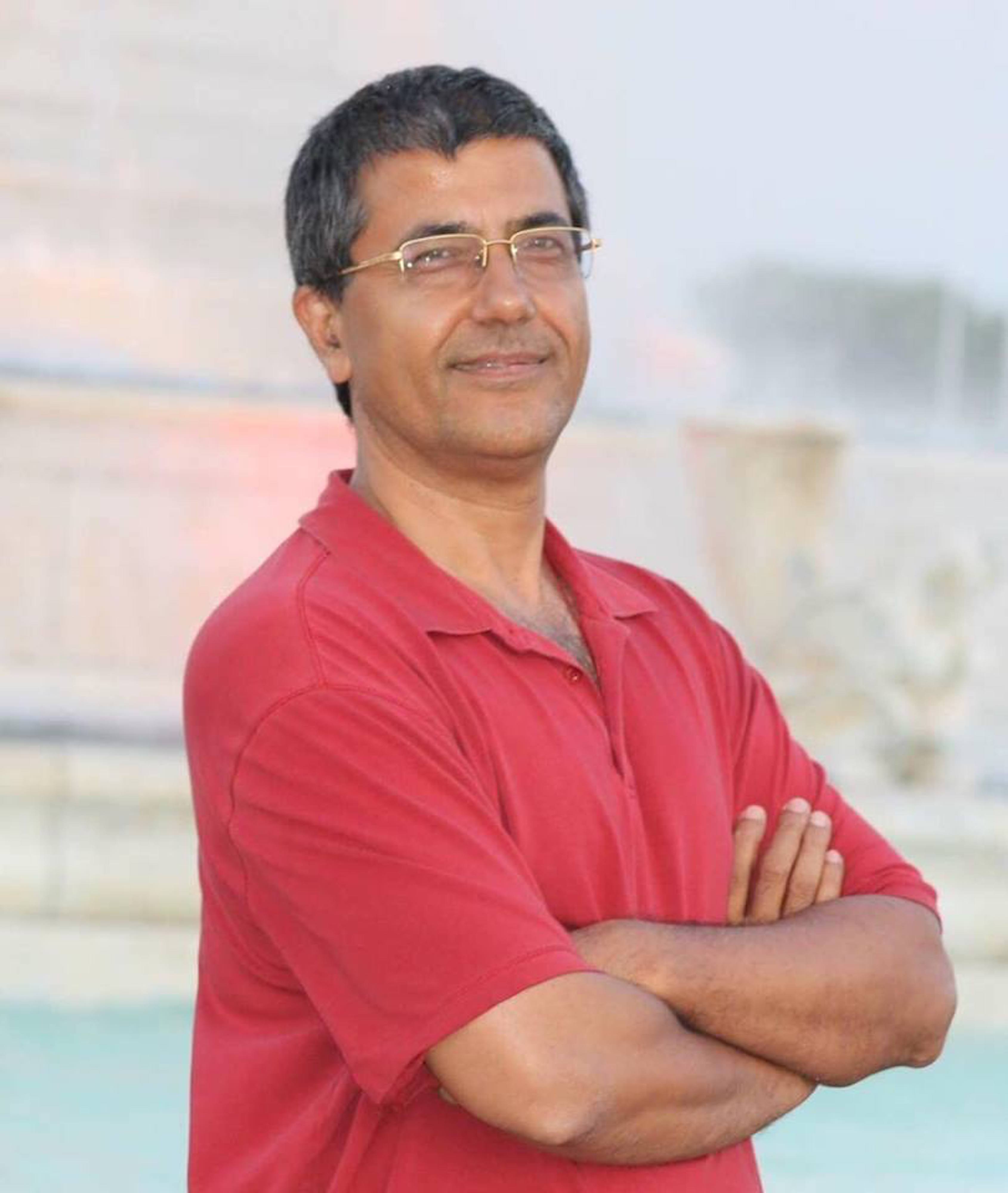 Midwestern Gothic staffer Kathleen Janeschek talked with author Samrat Upadhyay about his collection Mad Country, intersections of Nepal and America, current event writing, and more.
Midwestern Gothic staffer Kathleen Janeschek talked with author Samrat Upadhyay about his collection Mad Country, intersections of Nepal and America, current event writing, and more.
**
Kathleen Janeschek: What’s your connection to the Midwest?
Samrat Upadhyay: Midwest has been my home away from home for the past twenty five years. When I first landed in the U.S. on a cold January evening in 1984, it was in Cedar Rapids, Iowa, to attend school at Coe College. After one semester, I transferred to Ohio’s College of Wooster, from where I earned by BA in English. For my MA, I migrated three hours south to Ohio University in Athens, Ohio, where I earned a degree in Creative Writing. After I spent some time in Nepal and in Hawaii, my first tenure track job brought me back to Ohio, at Baldwin-Wallace College. Now for more than a decade I’ve been a professor at Indiana University in Bloomington. Although I can’t call myself a child of the Midwest, I’m certainly a student of the Midwest. And since I got my US citizenship while in Indiana, I’m a naturalized Hoosier.
KJ: Nepal and Midwestern America are undoubtedly very different places to live in. So what has been the most surprising similarity between the two?
SU: You know, my whole body of work is about seeking commonalities among people. When my first book was published, some reviewers seemed surprised that Nepalis were like Americans: they laugh, eat, worry about their children’s schooling, have sex etc. Speaking specifically of the Midwest, I think there is a openness and approachability to both Midwesterners and Nepalis. Midwesterners are friendly and helpful, and Nepalis are also warm and kind people.
KJ: Do you ever find your depictions of Nepal influenced by your experience in the Midwest?
SU: Living in the quietude of the Midwest has certainly sharpened my sense of Nepal. I am a writer who needs a distance – both of time and place – to write with clarity, and living this far away has enabled me to have perspectives that I otherwise wouldn’t have. More specifically, I was a poor student throughout my college career in the Midwest. In Nepal, I’d grown up middle class, and although my parents weren’t well to do, they’d made sure I didn’t feel any lack. So, this experience of not having enough in America was new to me, and I think it taught me important lessons about human experiences that I was then able to transfer to my Nepali characters.
KJ: When portraying Nepal to a primarily Western audience, what cautions do you take?
SU: I try to be as balanced as I can. I have certain views and opinions, but a work of fiction isn’t about my opinions but about the complexity of people’s lives I depict. Balancing doesn’t necessary mean I’m looking for the other side of the coin in each instance: it simply means turning inward to reach for the truth. Often that’s enough for a truthful and multifaceted portrayal. It’s a question of not blocking your own light.
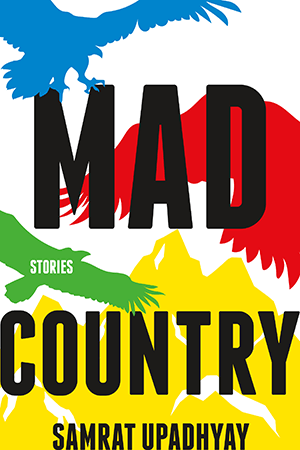
KJ: In your new collection, Mad Country, there is the story called “America the Great Equalizer,” which is your first story set in America. What made you finally decide to write a story set in America?
SU: “America the Great Equalizer” is my first story fully set in America, although in my previous work my characters have done some traveling to America. When I lecture or do readings in the U.S., my Nepali readers, especially the younger generation, have asked me why I haven’t written about them. My answer has been that Nepal’s hold on me is too strong to break. When Ferguson happened, I began thinking. Race issues in America tend to be couched in the binary of black and white, and the other shades of color are often not a part of the conversation. I envisioned a young Nepali student, with baggage from his own personal life, trying to come to grips with this big racial divide. It seemed like a natural extension of the other stories I was writing during that period. Many of these stories, although set in Nepal, also investigate the various identities that orchestrate our experiences.
KJ: Much of your work – including the previously mentioned story which centers around the death of Michael Brown and the subsequent riots in Ferguson – focuses on recent happenings. What do you consider the advantages and disadvantages of writing about current events?
SU: As I mentioned before, I do need some time and space in order to write about events. With Ferguson, I sensed an urgency, and I hope that urgency is communicated to the reader in my story. When you write about current events, what gets on the page can feel immediate and electrifying. The disadvantages of it are, of course, that you don’t have the wide-angled view, the third eye, that is crucial to a writer.
KJ: Likewise, many of your stories take place at the intersection between the personal and the political. What attracts you to these intersections?
SU: The personal is the political, as societal rules and consensus inform the everyday decisions of our lives. In the U.S. politics often doesn’t seem to matter in our personal lives, but even here you see that it’s the poor and the marginalized, and often the people of color, who are immediately affected by decisions made by those in power. In Nepal, politics feels intensely personal. During the Maoist civil war between 1995 and 2005 for example, even as a Nepali living in the U.S. I felt that it had invaded my personal space. When I spoke on the phone to my parents in Nepal, I’d hear fear in their voices, especially during the time when the Maoists targeted homes of those whose relatives lived in America. In my work, I am interested in how everyday people deal with the consequences of political decisions, how they manage to live, and sometimes live fully and richly, even in the midst of political crises.
KJ: What is the most important element of a sentence for you?
SU: That depends entirely upon what the sentence does. A sentence could purely functional, just to get the information across. Or it could emphasize mood and emotion. But I’m often on the lookout to see if a sentence can impart an image because images linger in the reader’s mind.
KJ: How do you keep your stories expansive and your language sparse?
SU: I like tight and lean – and sometimes mean – prose. The expansiveness has more to do with how you are looking (the vision) than what you are looking with (the medium). If your focus is narrow, then even when you employ expansive language, the focus will remain narrow. I do believe that language can empower us to become far-seeing, even though we might be quite nearsighted in real life.
KJ: What has teaching creative writing taught you about writing?
SU: That I don’t know everything, and that each classroom session is teaching me something.
KJ: What’s next for you?
SU: I am working on a novel. It imagines a radically different Nepal in the aftermath of the real earthquake of 2015.
**
Samrat Upadhyay (samratupadhyay.com) is the first Nepali-born fiction writer to be published in the United States. His debut short story collection Arresting God in Kathmandu was the winner of the 2001 Whiting Writers’ Award and his second short story collection, The Royal Ghosts, won the 2007 Asian American Literary Award. His first novel, The Guru of Love, was a New York Times Notable Book while his second novel, Buddha’s Orphans, was longlisted for the 2012 DSC Prize for South Asian Literature. His 2014 novel, The City Son, was longlisted for the PEN Open Book award. His latest story collection, Mad Country, has been called “brilliant” by Kirkus Reviews and “timely and remarkable” by Publishers Weekly. He is the Martha C. Kraft Professor of Humanities at Indiana University, where he teaches in its MFA program.
August 3rd, 2017 |
 Midwestern Gothic staffer Meghan Chou talked with author Ian Bassingthwaighte about his book Live From Cairo, perspectives on the refugee crisis, the psychological toll of his work, and more.
Midwestern Gothic staffer Meghan Chou talked with author Ian Bassingthwaighte about his book Live From Cairo, perspectives on the refugee crisis, the psychological toll of his work, and more.
**
Meghan Chou: What’s your connection to the Midwest?
Ian Bassingthwaighte: I was born in Minnesota and lived for a few years in Iowa, but moved to the West with my family at such a young age that I don’t have substantial memories of either state. Just vignettes. Blurry, almost dream-like recollections about a neighbor, a yard, a street. I didn’t come back to the region for more than twenty years, after I was fortunate enough to have been accepted into the Helen Zell Writers’ Program at the University of Michigan. This was in 2013. I spent the next two years in Ann Arbor and another two in Ypsilanti. Though my novel isn’t, as the title makes clear, set in the Midwest, much of it was written there. In my apartment, in the library, in the Rackham Building. This shows in small, but important ways. One of my characters is from Dearborn, for example. That character’s mother fled Iraq for Michigan, and ended up working in the library at Wayne State. These choices weren’t exactly conscious; real life just had a way of leaking into my work.
MC: Live From Cairo takes place in 2011 after the ousting of President Hosni Mubarak as Egypt erupts into riots. We follow the struggles of Dalia, an Iraqi refugee seeking asylum in the United States with the hopes of joining her husband in Boston. Live From Cairo unveils the ironies of wartime and bureaucracy in the modern Middle East just as Joseph Heller’s Catch-22 exposed the logical fallacies during World War II. How were you inspired by Catch-22 and what ironies particular to the conflict in the Middle East, and Cairo at the time, did you want to bring attention to?
IB: One of the many quotes from Catch-22 that I love: “The government paid him well for every bushel of alfalfa he did not grow. The more alfalfa he did not grow, the more money the government gave him, and he spent every penny he didn’t earn on new land to increase the amount of alfalfa he did not produce. Major Major’s father worked without rest at not growing alfalfa.” I love it because it reminds me how ill-equipped government and bureaucracy tends to be in A.) identifying the problem and B.) solving it. Take, for example, the refugee crisis. Western countries, which have been starting or exacerbating conflicts in the Middle East for generations, collectively bemoan the violence in the region, pass it off as a religious issue, and all but shut their borders when refugees, who’ve fled their home countries not by choice but by necessity, show up at the figurative door in search of respite. “Go away!” is the rallying cry of the Western world. “Keep your problems to yourself!” It’s absurd. We make refugees, then punish them for existing. It would be worth all the years it took to write this book if even one person who couldn’t see that before reading was thereafter able to.
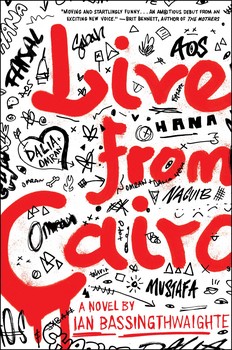
MC: Hana, a resettlement officer for the United Nations Refugee Agency, and Charlie, a lawyer who works for the Refugee Relief Project, are two characters from very different backgrounds who have a large influence on Dalia’s fate. Both want to help refugees, but since only a limited number of cases can have a good outcome, the decision mostly rests on the power of the individual’s story. How do Hana’s and Charlie’s attitudes toward the refugee crisis change after they meet Dalia and hear her story?
IB: I can’t say too much about that without ruining the plot of the book. What I can say: even stubborn minds will change under the right circumstances. Arriving at those circumstances is largely what this book is about.
MC: Live From Cairo has a diverse cast of characters, including the aforementioned Dalia, Hana, and Charlie, as well as Aos — a protester in Tahrir Square, interpreter for refugees, and Charlie’s friend. How did you create distinct voices for these characters and what perspectives on the refugee crisis do each bring to the story?
IB: Writing believable characters is easier when you’ve born witness to people like them. That’s why I’m so thankful for my travels, for having worked in an office like Charlie’s, for having met, talked to, and befriended very real people who filled the roles likes the ones I’ve written. Lawyers, interns, translators, UNHCR employees, and so on. Having that abundant resource—thousands of memories derived from a powerful, if also painful experience—makes all the difference. There’s less burden on the imagination.
It’s interesting, too, that you ask about the different perspectives each character has on the refugee crisis. The book was designed with that question in mind. Omran, who was lucky enough to have been resettled, is nevertheless stuck in limbo. He’s waiting for his wife, who’s stuck in Egypt. Her lawyer, Charlie, is stuck trying to help them. The inadequacies of the system provide no room to move. Aos, Charlie’s only friend and translator, is stuck between a refugee crisis at work and a failed revolution in the streets literally surrounding the office. Hana, the UNHCR employee, is stuck between her desire to help and her inability. The rules make it impossible for her to act. Though these perspectives are different, they all share a common thread: an overwhelming sense of futility. No matter where you’re standing when you look at the resettlement system, you see a process that doesn’t work as it should. This brings us to the plot’s driving question: how far will the characters go to circumnavigate that broken system?
MC: In 2009, you served as a grantee of the Fulbright Program (an international exchange program dedicated to raising awareness of global issues). As a part of the program, you worked at a legal aid office in Egypt, helping refugees from Iraq, Sudan, and the Horn of Africa. How did your time in Egypt influence your portrayal and understanding of the struggles of refugees from the Middle East?
IB: More than just influencing my portrayal and understanding of the refugee crisis, it fundamentally changed my understanding of who refugees are. These are not people without hope, without humor, without light. These are people with lives in front of them. Futures, if we dare call them that. Characters who were cast in that role had to be round, had to be complicated. No empty shells. No victims who weren’t also something else. A father. A mother. A husband. A wife. An aspiring dancer. Something.
I would be remiss if I didn’t also mention the psychological toll of the work. The New York Times cited the rate of clinical depression among aid workers at double that of American adults. Experience tells me the real number is higher. But I digress. The point I’m trying to make is this: the work never really left my body. Writing this novel has been one way of handling that. So the job was more than just an influence; it was also the impetus.
MC: In addition to writing, you have had photographs published in magazines such as National Geographic. One particular series features photos of Egypt and the Middle East. How did the process of framing the cities and landscapes affect your portrayal of Egypt in Live From Cairo?
IB: Photography is more than just a visual reference. At least, if you’re shooting the photos yourself. Then the ostensibly static images contain smells, sounds, tastes, feelings. They are keys to memories locked away by time. (This is where I admit how long it took me to write Live from Cairo—7 years.) I needed some way to keep Egypt with me after I left. Besides reading and reminiscing with friends, photography was all I had. I suppose, too, that photography affects how I see the world and, by extension, how I describe it. My eyes, and so my pen, are drawn to singular details that reflect the nature of some larger place. Why describe an entire kitchen when you can just describe ants crawling in the sugar bowl? The reader’s imagination will extrapolate the desired shabbiness.
MC: In the past, you have published mostly short stories and nonfiction, so Live From Cairo is your first full-length novel. What advice do you have for writers transitioning from short fiction to longer pieces?
IB: There’s a song I like by First Aid Kit in which they sing, “Now, so much I know that things just don’t grow if you don’t bless them with your patience.” I suggest every budding novelist take that line to heart.
MC: What’s next for you?
IB: I’ve taken a few tentative steps toward a second novel. I’m still interested in immigration, but with an eye toward the future: how borders might look, for example, in a post-apocalyptic environment. Anything else I say about it will almost certainly change. It’s just an idea at this point. A few dozen pages of chicken scratch.
**
Ian Bassingthwaigthe was a Fulbright Grantee in Egypt in 2009, where he worked in a legal aid office that served refugees from Iraq, Sudan, and the Horn of Africa. He has been honored with Hopwood Awards for both novel writing and short fiction. He was also named as a finalist for the Daniel Pearl Investigative Journalism Initiative. His work has appeared in Esquire, National Geographic, The Chicago Tribune, The Sun, Tin House, The Rumpus, and many other publications. Live from Cairo is his first novel.
July 28th, 2017 |
 Midwestern Gothic staffer Audrey Meyers talked with author Lance Olsen about his book Dreamlives of Debris, the Minotaur myth, how to navigate a narrative, and more.
Midwestern Gothic staffer Audrey Meyers talked with author Lance Olsen about his book Dreamlives of Debris, the Minotaur myth, how to navigate a narrative, and more.
**
Audrey Meyers: What is your connection to the Midwest?
Lance Olsen: I was raised in the climate-controlled malls just across the George Washington Bridge from New York City in northern New Jersey. My neighborhood was leafy, middleclass, middle-of-the-road, and head-bangingly bland. From a very early age, I had the strong sense there were other Americas out there to explore.
So when it came time for college, I told my guidance counselor I wanted to major in journalism and asked her where I should apply. She suggested the University of Wisconsin. Madison, I discovered, was the antimatter of my north-Jersey suburb: energetically political, progressive, irreverent, questioning, intellectually exciting. I could feel myself changing every day I was there.
By the time I was ready to apply to grad school, I knew I wanted to be a fiction writer instead of a journalist because we get to make more things up. I asked my creative-writing professor at the University of Wisconsin where I should go. She suggested the Iowa Writers Workshop. There I found an amazing cultural oasis. Iowa City still has one of the best film series I’ve ever encountered and a crazy-good reading series associated with the Workshop. The Workshop itself taught me universes about writing — both by positive and negative example.
Most important, I met my wife, Andi, while studying in Iowa City. She’s an artist and videographer from Des Moines. We spent many hours speeding past those farms separating the two cities and checking out all the Iowas in Iowa.
AM: How has the Midwest impacted your writing?
LO: My first novel, Live from Earth, this story about a couple so deeply in love they don’t let something like death get in the way their relationship, is set in good part in the Midwest — primarily in Iowa City and Des Moines.
When you grow up in one place, then move to and write about another, you experience that new place like a traveler might. That is, you pay attention in a way you don’t, you can’t, when you’ve lived somewhere your whole life. Everything — the smells, tastes, landscape, way people say hello, slight linguistic eccentricities — everything feels different and special.
One of the dictums in the creative-writing classroom, of course, is to write about what you know. But it’s also important to write about what you don’t know, to write like a traveler — not like a tourist, mind you, but a traveler. Or at least that’s something that’s always interested me.
AM: What inspired you to write Dreamlives of Debris?
LO: Since I first heard it as a child, I’ve been drawn to the Minotaur myth. It seems somehow tremendously powerful — this monster, this id, this other, imprisoned below the palace of Knossos: a metaphor, perhaps, for what we need to keep repressed in order as a culture to remain whole and functioning.
The possibilities for how to bring that myth into the contemporary intrigued me, had nipped at my imagination for years.
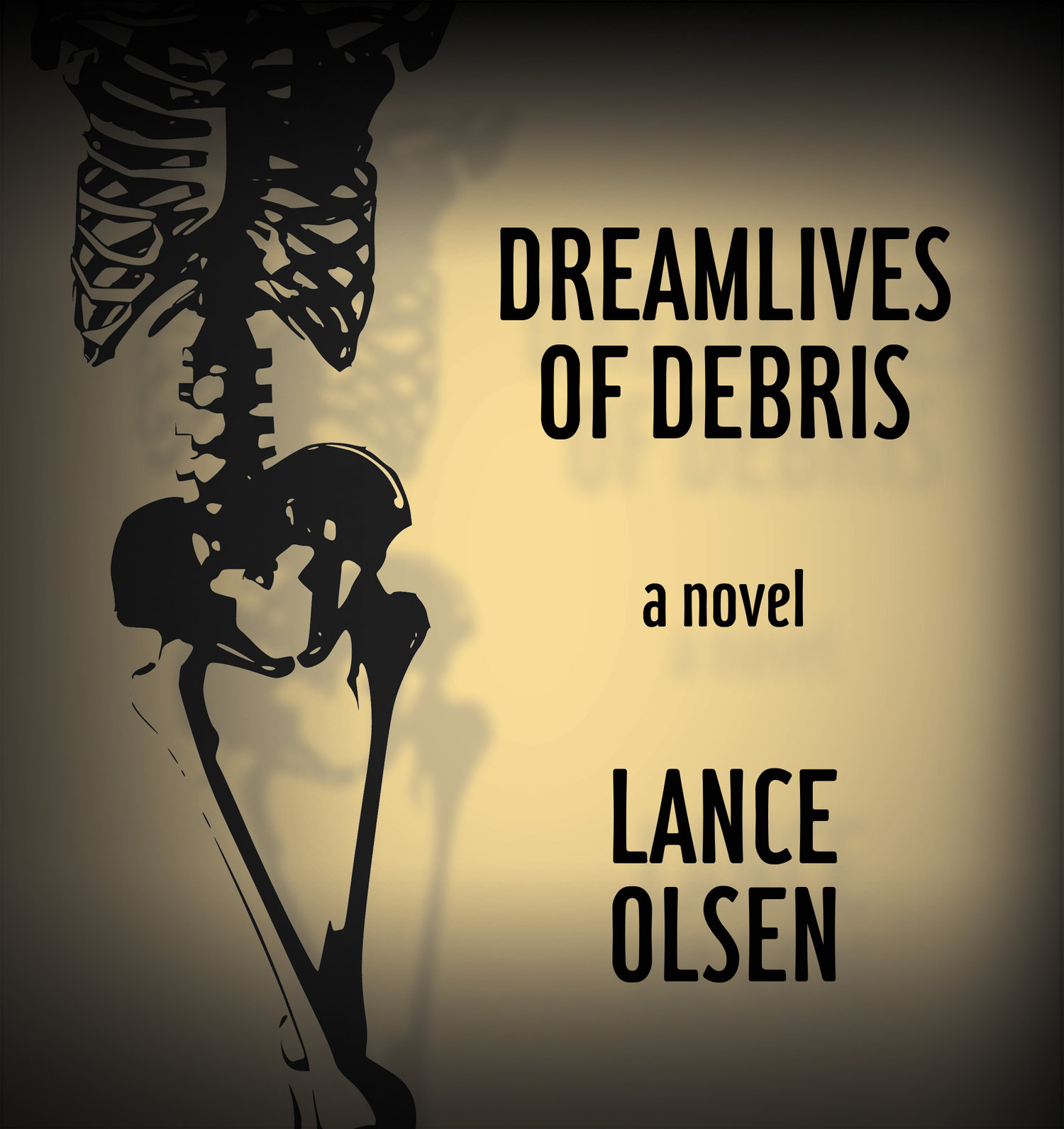
AM: How did you reinvent the Theseus and Minotaur myth? What were the challenges creating a new perspective on it and how did you make it work?
LO: The central point of view of Dreamlives of Debris — which is part horror tale, part science fiction, part love story, all experimental narrativity — rests with the Minotaur. Here, though, the teratoid isn’t a being with bull’s head and human body, but rather a little deformed girl whose parents have hidden her away at birth in the labyrinth on Crete.
She calls herself Debris, and possesses the ability to hear, see, and feel the thoughts, memories, desires, pasts and futures of others throughout history, from Herodotus to the Silk Route traders to Borges, Derrida, and Edward Snowden. In fact — and this is her problem — she can’t stop herself from receiving all those voices speaking through her. It’s maddening. Literally.
Debris, then, is a kind of living instrument through which time travels, but also an emblem for our lived experience in 2017, in which temporality often feels like a flurry of abrupt slaps.
AM: What do you think there is to gain from retelling a story in an innovative and unique way?
LO: Retelling is an essential part of knowing. Think of Virgil, who re-speaks the Odyssey as the Aeneid, or James Joyce, who re-speaks it as Ulysses, or perhaps the plethora of fairytale reiterations that are so popular these days. In fact, from a certain perspective every narrative is a retelling of former ones to the extent that it is in constant conversation with the genre in which it’s working, which is to say all examples of that genre the author has read, and all the ones he or she hasn’t. Every vampire story is by nature a recapitulation, adaptation, and alteration of all those that went before.
How come? Because by rewriting we re-right. We bring narratives into harmony with the contemporary. Through retellings we un-tell, compose our present rather than simply perpetuating someone else’s past, interrogate the assumptions of received narratives and recast them so they continue to mean for us.
Doing so, we remind ourselves there are always other ways to narrativize our lives, which is to say other ways to live them, other ways to script them than the ones we’ve been taught. That’s an astonishing political, epistemological, and existential act.
AM: How do you make the lessons of the past relevant to the present in Dreamlives of Debris?
LO: Most of us wear our monsters on the inside. My protagonist Debris is just like us, only more so — she wears her insides on her outside. Another way of saying this: I wanted to gender the idea of monstrosity, make Debris a little girl, so that I could explore how our culture has often conceptualized the feminine as the horrendous incarnate in order to contain and silence it in various social labyrinths beneath various poleis.
I was also interested with the labyrinth as an emblem for contemporary experience.
AM: How did you conceptualize Debris’ labyrinth?
LO: The labyrinth takes the form in my novel of an impossible liquid architecture that bears no center and hence no discernable perimeter.
In our post-facts contemporary, one could argue it’s become labyrinth all the way down. I imagine the labyrinth, not just as a structure, then, but as a mode of knowing, a mode of being, an extended and dense metaphor for our current sense of presentness — the impression, for instance, that we are always awash in massive, contradictory, networked, centerless data fields that may lead everywhere and nowhere at once.
These days I’m as committed to building a novel as writing one, so I laid out Dreamlives myself in InDesign. Every page is a perfect square representing a different textual room in Debris’ labyrinth. And each arrives without a page number, so it’s easy to become disoriented, lost, as a reader — just as Debris and her victims become disoriented, lost, within the pages of the novel.
Because Dreamlives of Debris arrives with no conventional location markers, the reader may feel, not only slightly adrift, but also a little freer to jump around, begin to think of reading as a kind of choreography, taking various paths as the mood strikes, for as long as the mood strikes, and then perhaps wandering off in a different direction.
AM: What did you learn about yourself as a writer when creating Dreamlives of Debris?
LO: It’s such a strange undertaking: living with a developing book for two or three years. You’re learning something new about yourself with every punctuation mark you use, let alone about your being in the world — what’s important to think and feel about, why, and how.
At some deep-structure level — and I didn’t think of this until you asked that great question — Debris’ problem is every writer’s, isn’t it: how to construct and navigate a narrative, how to mine the past and present productively, how to put ourselves in spaces outside our comfort zones that enable us to take risks, learn, unlearn, become new people every moment.
What I may have come to understand about myself is that Dreamlives of Debris is a working out, really, what it feels like being a writer.
AM: What’s next for you?
LO: I’m working on a novel titled My Red Heaven. It’s set in Berlin in 1927 — a year that saw the city as a cultural mecca. Of course, it had no idea what lay just a few years away. The novel will take the form of a collage, each chapter a flash-narrative about the people who inhabited Berlin: Otto Dix, Ludwig Wittgenstein, Franz Kafka, Vladimir Nabokov, Ludwig Mies van der Rohe, Arnold Schönberg, and so on, as well as figures history has forgotten: a sommelier, a pickpocket, several ghosts, a serial killer.
The question behind it, really, will be about how pastness occurs only in the incessant process of being un-written, re-written, learned, unlearned, and relearned. That’s something that’s fascinated and troubled me for years in one way or another: the problematization of historical knowledge — how history exists, how it is composed, who does the composing, and to what ends; how history (as is the case with all nonfiction) is a special-case subset of fiction.
Behind that set of concerns, there’s another (and this speaks to that idea of retelling we were just talking about): My Red Heaven functions as an invitation to contemplate our current political crises, from the alarming rise of the populist right and the growth of its politics of paranoia and attacks on progressive thought to its economic and anti-cultural undermining of the arts and humanities.
With that, we’re back to a sort of political thought I first encountered in Madison, Wisconsin, as an undergraduate: the idea that all narratives are political, especially those that call themselves the opposite.
**
Lance Olsen is author of more than 20 books of and about innovative writing, including the novel Dreamlives of Debris (Dzanc, 2017). His short stories, essays, and reviews have appeared in hundreds of journals and anthologies, such as Conjunctions, Black Warrior Review, Fiction International, Village Voice, BOMB, McSweeney’s and Best American Non-Required Reading. A Guggenheim, Berlin Prize, D.A.A.D. Artist-in-Berlin Residency, N.E.A. Fellowship, and Pushcart Prize recipient, as well as a Fulbright Scholar, he teaches experimental narrative theory and practice at the University of Utah and serves as chair of the Board of Directors at the independent press Fiction Collective Two, currently in its 43nd year making fiction making trouble.
July 27th, 2017 |
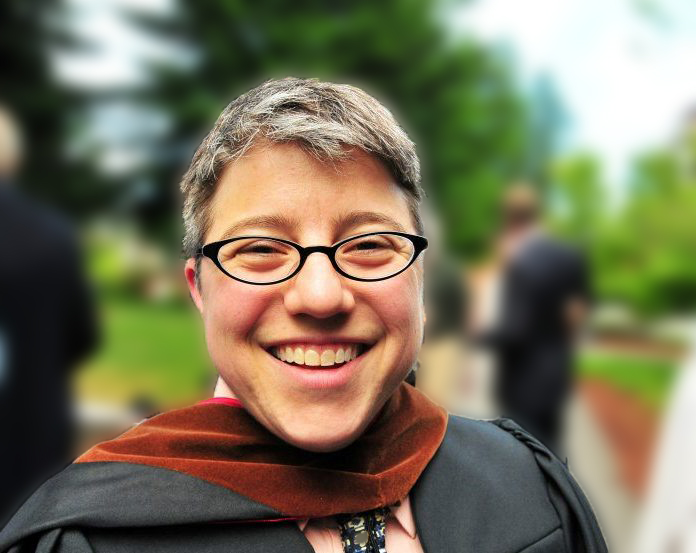 Midwestern Gothic staffer Audrey Meyers talked with author Amanda Kabak about her novel The Mathematics of Change, the complications of transitions, not being able to connect, and more.
Midwestern Gothic staffer Audrey Meyers talked with author Amanda Kabak about her novel The Mathematics of Change, the complications of transitions, not being able to connect, and more.
**
Audrey Meyers: What is your connection to the Midwest?
Amanda Kabak: I grew up in a suburb of Chicago then went to high school in another suburb (or, I should say, at the edge of another suburb – it was mostly corn fields at the time). After high school, I made a great escape to Boston and swore I would never return to the area. 16 years later, I shocked my parents by moving back – to downtown Chicago this time, where I lived for 8 years until I recently moved again.
AM: How has living in the Midwest impacted your writing style?
AK: Growing up, I never quite felt comfortable, not in my own skin, not with my peers, not with suburban Chicago’s uninspiring landscape. I always wanted to get away, either someplace else physically or deep into my own head, but disappearing was practically impossible at that time, in those places, around people who were into everyone else’s business. When I moved to Boston, I felt at home for so many reasons: being in a city instead of a suburb, being around “rude” people who weren’t interested in me or in chatting out of supposed friendliness, the Berkshire Mountains in Western Mass and their welcoming beauty. It wasn’t until I moved there that I fully understood how foreign I had felt before, and it is this feeling of being an outsider, of not quite being able to connect, that informs so many of my stories and characters.
AM: What inspired you to write The Mathematics of Change?
AK: I write in coffee shops almost exclusively, and there was one I used to frequent in Boston where I sometimes saw this woman who was androgynous in the exact way I always wished I could be: tall, whip-thin, angular-but-not-unfriendly face. I have long been a denizen of the in-between, and I admit I was fascinated by this creature, who used to snag a table with her girlfriend to study. She took up a sort of permanent residence in my mind, but it was a couple of years before I built a character around her constellation of physical traits. Not just the traits, but unpacking what those traits mean to those around her, what they may have meant to her own personal history.
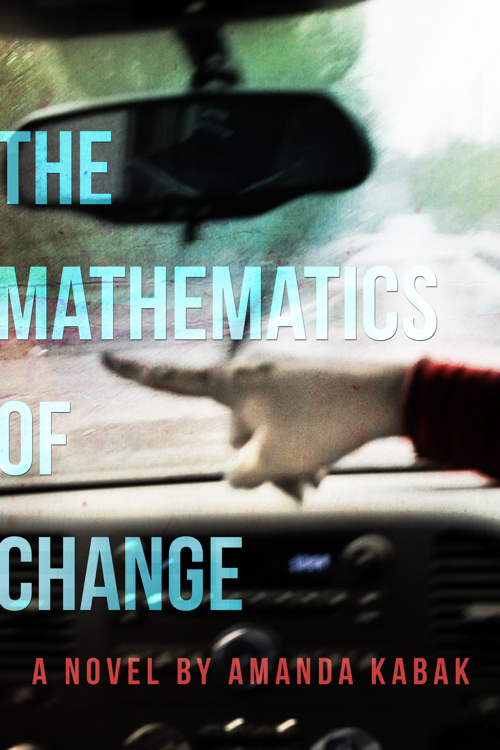
AM: What did you learn about yourself as a writer when creating this book?
AK: My whole experience as a writer is a bit of a cosmic joke. I lack both patience and the bent toward perfectionism that helps ease the path over the last 10% of any project, and writing requires both. Writing novels even more-so because the whole process is so prolonged. And yet, I am not myself when I’m not immersed in a long-form writing project. I get antsy and irritable and annoyed each time I reach the end of a short story and have to come up with another idea.
AM: Why are the themes of balance and change important aspects of your book? How do these two concepts interact in your character’s world?
AK: At my last job, my boss started to quote me: “As Amanda says, change is inevitable.” But that doesn’t make it easy, especially on an emotional level. When that change sparks self-reflection and doubt, it is even worse. Yet what are we to do? Entropy tells us, in a sweeping, metaphoric way, that there is no going back, but if change comes too fast for adaptation, we’re sunk as well. Enter the idea of balance. In the midst of change, we must balance holding fast to our idea of ourselves with reevaluating and adjusting. Both Mitch and Carol have these very deep-seated concepts of who they are – of how the decisions they have made in the past shaped what they feel is fundamental to themselves and maybe even their friendship, but they are forced to question this in very difficult ways.
AM: What character development traits are present during a midlife crisis? How did you explore these characteristics as your wrote The Mathematics of Change?
AK: I suspect mid-life crisis manifests differently for different people. I mean, I think I had mine at 19 or 20, but that’s another story. For Mitch and Carol, it is a reckoning. It is an outside force blowing through their lives that whispers, “Is this really what you want? Is this how you want the rest of your life to go? Can you imagine decades more of this?” It’s a frightening thought if you’ve successfully gone 20 or 30 years without much self-examination. There’s so much fear: what if I’ve made a terrible mistake and have to either live with it or try to rectify it? How have I hurt myself or others? How will I hurt myself or others if I try to change things? What will people think of me if I make a change? In the end, it is the attempt to answer the question of who we are at our core and, as a part of that, what is most important to us. Is it achievement? Connection? Family? Happiness?
AM: What drew you to writing about the complications during the transitions of life?
AK: Isn’t life just one transition after another? Over the last 15 years, I’ve had 8 jobs, lived at 7 different addresses in 3 different states, went from being the youngest at whatever company I’m working for to one of the oldest. The only consistent thing has been my sweetheart, and thank god for that! Change forces your hand, removes momentum from the equation, and that’s when things really get interesting.
AM: What life experiences helped you most to gain an understanding of the human condition?
AK: As I’ve said, I’ve always been something of an outsider – in one way, shape, or form. When I was younger, I was consistently just *flummoxed* by other people. They were maddeningly inconsistent, opaque, slippery chameleons. For a long while I was sure I would never understand someone or be fully understood in response. But then I was – or at least thought I was – and then, well, you can guess. Heartbreak is both universal and particular, and working through that was a formative experience for me. It is part of the human condition, as is the experience of being a prisoner of your past. That may be true, but I’ve also learned that despite history and trauma, we abdicate control of our own minds, emotions, reactions, and behavior at our own peril. So much of life is a tug of war between the ego and the id, but gaining mastery over ourselves is at the root of life, don’t you think? Moving consciously through your day, weaving kindness into your interactions (both to others and to yourself), seeing where you need to improve and tuning yourself like an instrument into something better, more gloriously resonant.
AM: What do readers take away from your book?
AK: At the very least, they probably end up knowing more about friction than they used to! But also that you must bend or you’ll break. Oh, and that forgiveness is at the root of change.
AM: What genre would label The Mathematics of Change?
AK: My publishers say it is “new women’s fiction,” but I think of it as straight-up storytelling. There’s something in it for many people, not just women, not just lesbians, not just mothers, not just people of a specific age.
AM: What techniques do you use as a writer to create authentic relationships between characters?
AK: I think of the inevitable gulf between what we think and what we do, what we intend and what actually happens. I write about people who want to be quality human beings but who make decisions that undermine themselves and hurt other people. I drive through dialog past what I intend to where someone says something wholly unanticipated and game-changing. And I get it wrong for about twelve drafts (during which time I think I get it right several times before realizing I’m deluded) until I find the contradictions and idiosyncrasies that make characters fully-realized people. Once that’s in place, when they interact with each other, those interactions will ring true.
AM: What do you enjoy most about being a writer?
AK: For me, writing is communication distilled then expanded. It is taking something so particular and laying down words and sentences and scenes that can evoke that specific experience in a universal kind of way. It is the challenge of pulling someone into a life wholly unlike their own but having them feel this “ah” of recognition. It is the daily exercise of submerging myself in the world I’m creating and the craft of staring out a window or over a barista’s head, trying to deeply imagine, trying to find the just-right word, trying to make this fuzzy thing that sits in my peripheral vision as starkly real as I can.
AM: What’s next for you?
AK: After four years, I’m finally putting the finishing touches on my next novel, and I’ve got one percolating in line behind it, so I guess you know where you’ll find me for the next few years!
**
Amanda Kabak
July 20th, 2017 |
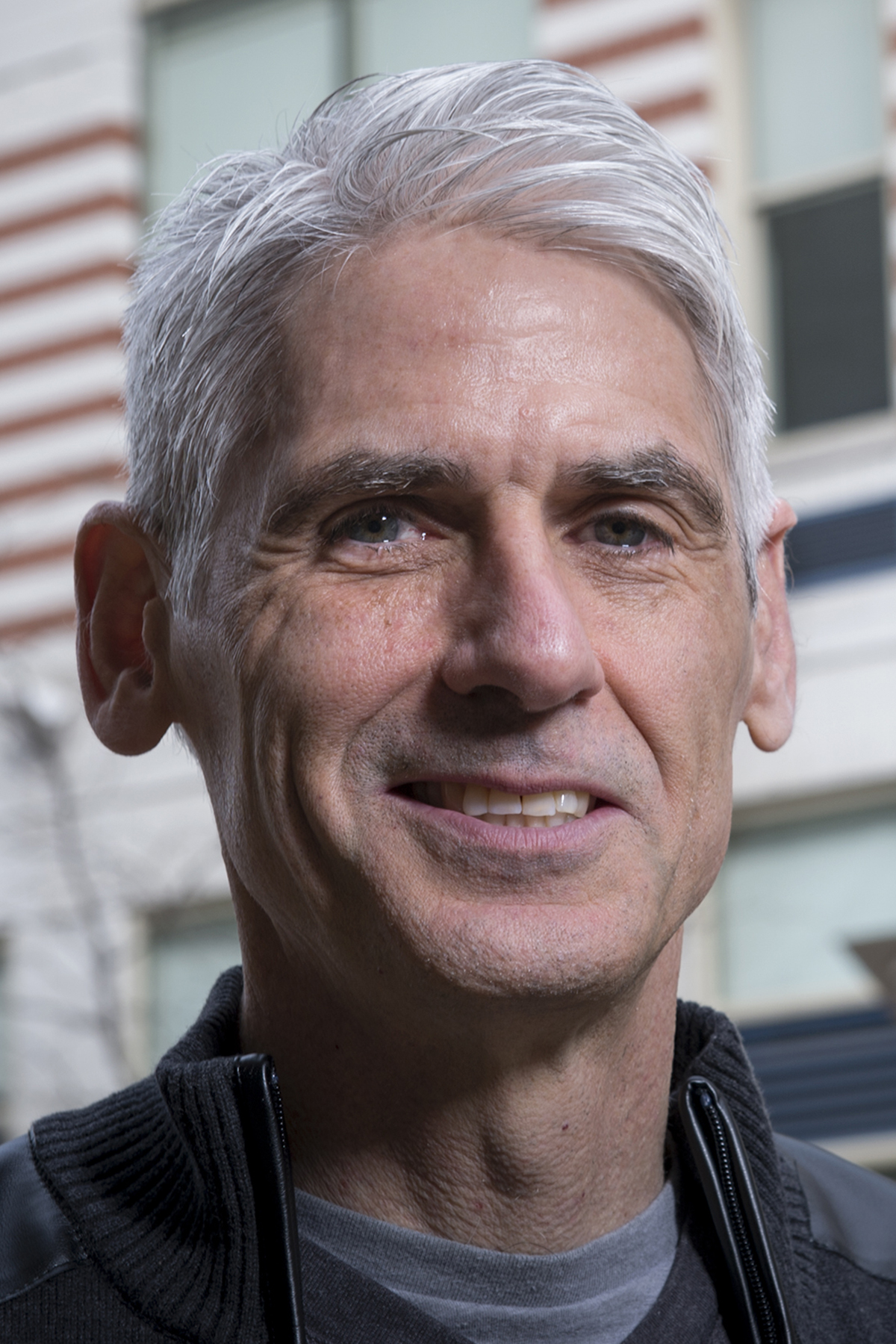 Midwestern Gothic staffer Audrey Meyers talked with poet Jim Daniels about his book Rowing Inland, being a poet of place, learning about oneself through writing, and more.
Midwestern Gothic staffer Audrey Meyers talked with poet Jim Daniels about his book Rowing Inland, being a poet of place, learning about oneself through writing, and more.
**
Audrey Meyers: What is your connection to the Midwest?
Jim Daniels: I was born and grew up in and around Detroit, spent three years in Ohio, and have spent many years living in Pittsburgh, which is where I believe the Midwest ends, though others would probably say it ends at the Ohio border.
AM: How has living in the Midwest impacted your writing?
JD: I am a poet of place, so a majority of poems are set in the Midwest, so it’s the firm ground on which my poetry treads.
AM: What inspired you to write about Metro Detroit in Rowing Inland?
JD: Most of my books, both poetry and fiction, use the Detroit area as a setting, so Rowing Inland is a continuation of my obsession with industrial, urban, Midwest landscapes. I find that a lot of literature—particularly poetry—tends to either ignore or distort working-class life, and I’ve always seen it as part of my work to say, hey, these lives are important.
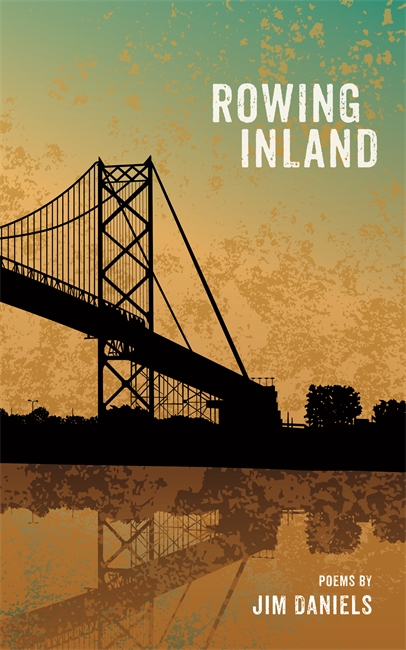
AM: Since Rowing Inland is your 15th book of poetry, what inspires you to keep writing?
JD: Like most writers, I don’t need inspiration to keep writing. I need to write—it’s a big part of what sustains me in my daily life. I just hope I can continue to find readers interested in what I have to say.
AM: A lot can be said with just the placement of words in poetry. How did you use this technique when writing Rowing Inland?
JD: Since I write fiction and screenplays as well as poems, I work to take advantage of the poetic line to create music and emphasis, and work on the intense compression of language into imagery, important characteristics of poetry that distinguish it from other kinds of writing.
AM: Since Rowing Inland is about traveling through time and history, how do you think your style carries the emotions of your readers to another place?
JD: The challenge for me as a poet is to take readers to the times and places of the poems and bring them to life, no matter where or when they are set. I often use narrative to try and bring the readers into the scenes, and lots of concrete detail. I spend a lot of time thinking about titles and opening lines because I want readers to land in the poem with their feet on solid ground.
AM: How were your own emotions utilized when writing this poetry?
JD: The emotions are the sparks for the poems. Without the emotion, the poem is going to fall flat. If I don’t care about my subject, readers aren’t going to care.
AM: What did you learn about yourself as a poet when creating Rowing Inland?
JD: I am always learning about myself as a person when writing. As a poet, I was reminded what an important role Detroit continues to play in my work—I seem to still have a lot to say about it.
AM: How did you infuse humor into a community’s struggle for survival?
JD: While I’m not consciously trying to get humor into the poems, humor is certainly a survival technique to help us cope with hard times, and Detroit’s sure had more than its share of hard times over the years.
AM: What do each 4 segments of your book represent? Why did you divide your book into these parts?
JD: I see the sections as representing family, community, childhood, and social class, though there’s obvious overlap across the sections.
AM: What key life experiences influenced your poetry in Rowing Inland?
JD: One event that shows up in three poems in the book is the death of a girl who lived down the street from me in a freak fire. She was the first girl I kissed, and she was the first person I loved who died. First kiss, first death—that combination creates a pretty powerful haunting.
One other thing that I found myself doing here was consciously trying to create a sense of Warren as a community as opposed to Detroit. I tend to say I’m from Detroit because most people outside the Detroit area are not familiar with Warren, but anyone from that area knows Warren is a very different place, on the border with Detroit, but very different. White working-class, mostly, but that is slowly changing.
AM: What do you hope readers take away from your poetry?
JD: For one thing, I value clarity in my writing, so I’m hoping readers find the poems clear and accessible, regardless of their geographic or economic backgrounds.
AM: What’s next for you?
JD: Current projects include two forthcoming books of poems, Street Calligraphy and The Middle Ages, and two anthologies, Challenges to the Dream: The Best of the Martin Luther King, Jr. Day Awards at Carnegie Mellon University, and, with my friend M.L. Liebler, I Just Want to Testify: Poems About the Music of Detroit. I continue to work on short stories and screenplays, and to collaborate with the photographer Charlee Brodsky, writing poems to go with her photos. We currently have an exhibit of our work on display at Michigan State University
**
Jim Daniels’ fifteenth book of poems, Rowing Inland, was published earlier this year by Wayne State University Press. Forthcoming books include Street Calligraphy, Steel Toe Books, and The Middle Ages, Red Mountain Press. His previous book, Birth Marks, was the recipient of the Milton Kessler Poetry Book Award, and the Poetry Gold Medal in the Independent Publisher Book Awards. His fifth book of short fiction, Eight Mile High, was a Michigan Notable Book and a finalist for the Paterson Fiction Prize. “The End of Blessings,” the fourth short film he has written and produced, appeared in sixteen film festivals in 2016. His poems accompanying the photographs of Charlee Brodsky were recently displayed in galleries at Robert Morris University and Michigan State University, and his poem “Factory Love” is displayed on the roof of a race car. His poems have been featured on “Prairie Home Companion,” Garrison Keillor’s “Writer’s Almanac,” in Billy Collins’ Poetry 180 anthologies, and Ted Kooser’s “American Life in Poetry” series. A native of Detroit, Daniels is a graduate of Alma College and Bowling Green State University. He is the Thomas Stockham University Professor of English at Carnegie Mellon University.
July 13th, 2017 |
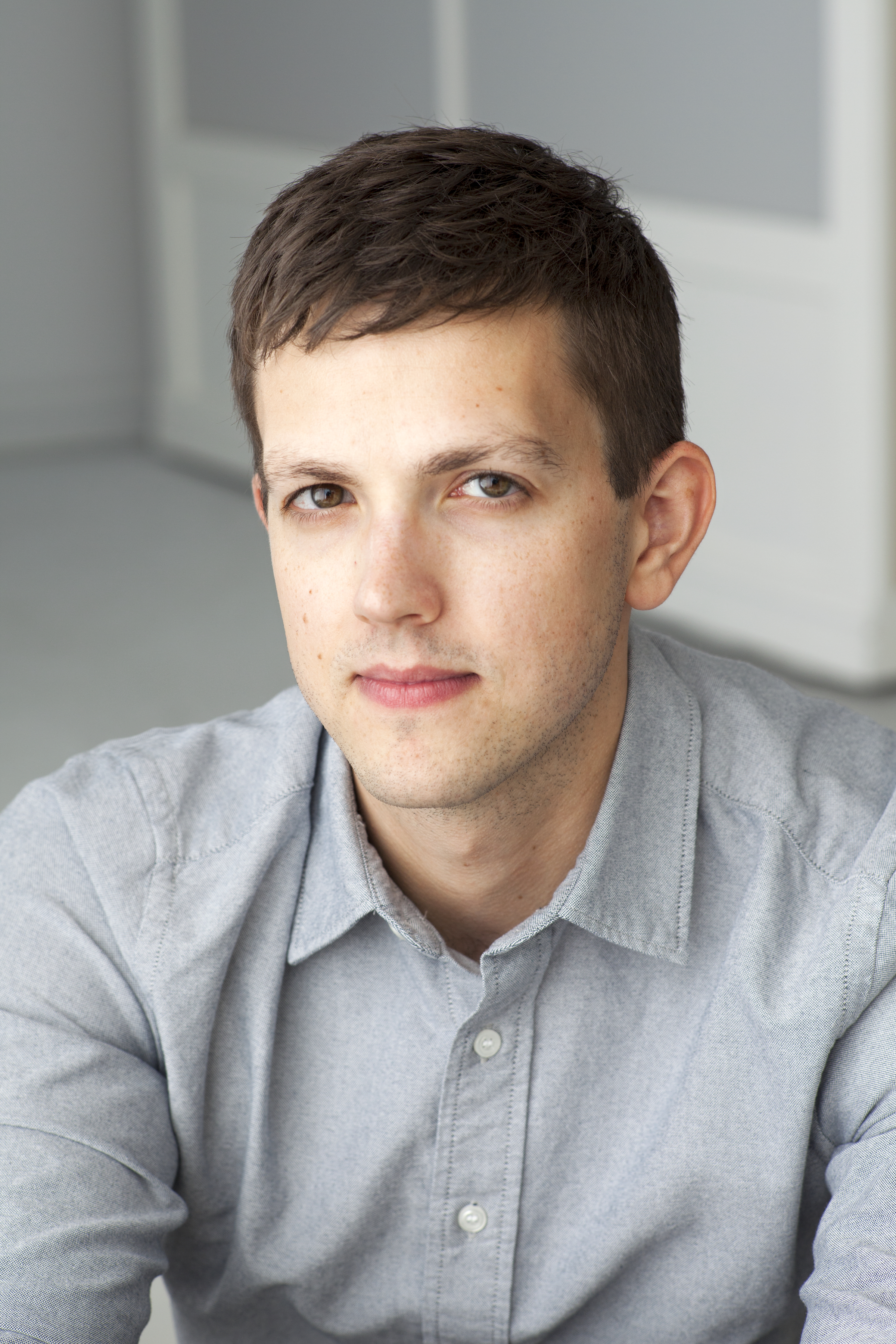 Midwestern Gothic staffer Kathleen Janescheck talked with author Gabe Habash about his novel Stephen Florida, “nowhere space,” being unsettled, and more.
Midwestern Gothic staffer Kathleen Janescheck talked with author Gabe Habash about his novel Stephen Florida, “nowhere space,” being unsettled, and more.
**
Kathleen Janescheck: What’s your connection to the Midwest?
Gabe Habash: I was born in Columbus, Ohio, and lived there until going to Florida for college. Most of my family lives in the Midwest, and my wife is from Michigan.
KJ: In your novel, Stephen Florida, your main character is a college wrestler who travels around the Midwest—including North Dakota, Minnesota, Wisconsin, along with other states—as he attends various competitions. Are any of the places he visits of particular significance to you?
GH: I hadn’t actually seen any of the book’s locations in person before writing. I like to have room to make the story. A story can’t be too close to my own experience or I’ll get bored. For instance, I live in New York and so I’d never write anything that takes place in New York. I live here every day, so to remain there when I sit down to write is just kind of claustrophobic and airless to me. So North Dakota and the smallish Midwestern towns that are in the book like Winona, Minn., Kenosha, Wisc., etc., were at the opposite end of the spectrum. The places in the book are significant to me because they had no prior significance; in fiction you have the chance to make them into something significant.
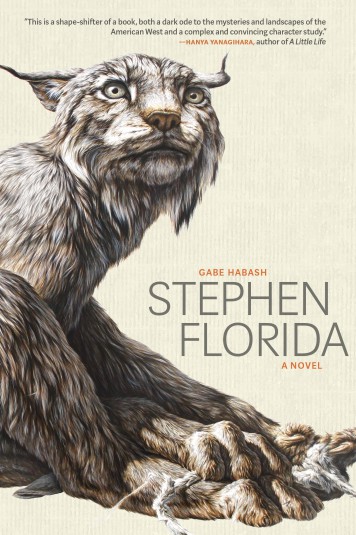
KJ: What made you choose to set your novel in the Midwest, particularly North Dakota?
GH: When I was growing up, we’d drive to the edges of Ohio to visit my grandparents. My mom’s parents lived in Lorain, which is near Cleveland, and my dad’s parents lived in Steubenville, which is right on the state border for both Pennsylvania and West Virginia. Between Columbus, which is in the middle of the state, and Lorain/Steubenville there are these long stretches of farmland and small towns. I always found these nowhere spaces interesting. You can see them in the photographs of Stephen Shore or Ed Ruscha, or even in Edward Hopper’s paintings. When you drive past a big field with a farmhouse plopped in the middle, it naturally makes you wonder because there’s so much to fill in, there’s so much emptiness and room. In my head, North Dakota was the most extreme version of this “nowhere space.” I liked the idea of a character doing something great there, but something only great to him, not because it isn’t impressive but because no one is paying attention. There was so much space to imagine the story.
KJ: Stephen lives and breathes wrestling—he’s more than a little obsessed. When writing about obsession, do you notice any uncomfortable parallels between the story you’re telling and your own experience as a writer?
GH: Yes, my relationship to writing and Stephen’s relationship to wrestling are not dissimilar. I’m not sure how many writers can finish a novel and not be obsessed with it. But the act of writing this book was also cathartic because I had a place to put my frustrations. Writing is usually uncomfortable. Sometimes it’s easy or you can amuse yourself but mostly it’s difficult to articulate the fog in your head, to transfer that onto the page. Then after you finish the first draft, your entire job becomes trying to fix and clean up all the little ways you failed to articulate what you wanted to articulate. When you write a novel, it takes years of your life and occupies so much of your mental space there’s not that much room left over. And the way Stephen handles his wrestling career is similar.
KJ: What about obsession do you think we, as a culture, are attracted to?
GH: I think we like to watch people commit to something, and to grow. Bildungsromans or coming-of-age stories, those imply movement or growth in a character. Obsession is just the extreme version of commitment. So if an obsession story is the most extreme version of a straightforward character arc, the stakes are naturally higher because the character is risking everything, and so will either be massively successful or a catastrophic failure. Then, as a writer, your job becomes making the reader care about the obsession of the character.
KJ: What made you want to write about wrestling? Do you have any personal experience?
GH: I’ve never wrestled, but I was drawn to how intense and unforgiving it is. The brain of a wrestler seemed to me fertile territory for a novel—what kind of person would commit to something so punishing? And the sport itself, with its weight management and fast physicality, was inherently dramatic.
KJ: Much of your novel focuses on the disgusting and the disturbing, and your writing emphasizes these aspects—how do you write about the unsettling?
GH: I like to be surprised both in books I read and in what I’m writing. Being scared or unsettled or disgusted or laughing all come from being surprised. I wrote the first draft of the book in about fifteen months. Because of the relatively quick pace and because I didn’t have all of the blanks filled in for certain scenes, I was able to surprise myself with unsettling or disgusting details.
KJ: How do you write a character with a voice as strong and, presumably, different from your own (such as Stephen’s)?
GH: I’m not sure! I had Stephen’s voice down when I sat down to write the first page, so that made the writing go quickly. I think generally I wanted to keep the voice from being boring and to make it consistently surprising. If I could surprise myself and not be bored, I figured that’d be a good foundation to build on.
KJ: You’ve worked as the Fiction Reviews Editor for Publishers Weekly for a while now. What insights about writing have you gained from that experience?
GH: I’m lucky that my job exposes me to books every day, and forces me to think about them critically as I work through the reviews. The style for our reviews is very short and straightforward—they typically run around 225 words—so editing those reviews every week made editing my book easier and more streamlined because if a sentence wasn’t doing what I wanted it to do, it was easier to think about why it wasn’t succeeding or to be okay with cutting it altogether. Most of the editing process with the book was cutting, and I’m sure it would’ve been a bit more agonizing if I didn’t edit reviews every day for my job.
KJ: Your wife, Julie Buntin, is also a writer—what is it like to have two writers in a household?
GH: We’re both the other’s first reader, and I know I don’t feel good about my writing unless Julie looks at it and gives her approval. When I wrote the first draft, I showed her the first 50 pages and only continued after she approved. Then I didn’t show the book to anyone or talk about it at all until I’d finished the whole draft. Then Julie read it, and after I’d incorporated her edits, only then other people gradually got to read it. The book would certainly be worse if Julie hadn’t helped edit it. And we’ve both largely gone through the first novel process together, so it’s been a lot easier to have someone next to you the whole way.
KJ: What’s next for you?
GH: It’s not real yet so if I articulate it now, then I’m afraid it will disappear and I’ll never get it back.
**
Gabe Habash is the fiction reviews editor for Publishers Weekly. He holds an MFA from New York University and lives in New York.
July 6th, 2017 |
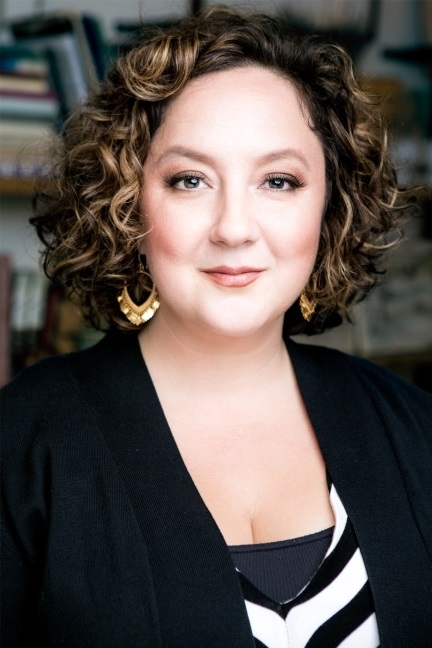 Midwestern Gothic staffer Meghan Chou talked with author Julia Fierro about her new book The Gypsy Moth Summer, cultural appropriation in writing, having empathy for characters, and more.
Midwestern Gothic staffer Meghan Chou talked with author Julia Fierro about her new book The Gypsy Moth Summer, cultural appropriation in writing, having empathy for characters, and more.
**
Meghan Chou: What’s your connection to the Midwest?
Julia Fierro: I lived in Iowa City while I was a student at the Iowa Writer’s Workshop from 2000-2002. Although it was just two years, my experience in the Midwest changed me, and I try to get back to Iowa City every chance I get. In fact, I have a trip planned in fall of 2017 for a reading in Chicago, to teach a workshop at the Iowa Writers House in Iowa City and participate in the Iowa City Book Festival.
In many ways, my time in the Midwest taught me to be a better person. I am a natural cynic—maybe because I was raised in New York, but I suspect it has more to do with my growing up with a father who was raised in Southern Italy before and after World War II. When you experience such extreme poverty, as my father did, it makes trusting people extra challenging. So when I arrived in Iowa City, twenty-two and somewhat terrified that I’d been accepted into this prestigious graduate program, I had quite a chip on my shoulder, and the kindness of the Iowans overwhelmed me. The first time a stranger said hello as they passed me on the street, I almost jumped at him to ask What do you want from me? As much as it is a cliché, the Midwesterners were the friendliest people I had ever encountered, and definitely the friendliest I’d ever lived among.
The postmaster at the local post office beamed when I walked in the door. Asked how my day was going and was insistent on a response. In New York and Boston and Washington, D.C., the cities I’d lived in before Iowa, a trip to the post office was well…different.
It took me about six months to adjust (to stop flinching when strangers said hi to me on the street) and now I love talking to strangers. In fact, as a closeted introvert, a person who appears extroverted but who needs a lot of time alone, some of my best conversations during the day are with strangers—the checkout guy at the convenience store, a Lyft driver, or a person admiring the same magnolia in full bloom on a street corner. Living in the Midwest taught me how to let go, allow myself to be a bit vulnerable in my daily interactions. To say hello and smile back.
Iowa was also important to my husband, writer Justin Feinstein. I met him when I was just twenty-one. I knew he was the one when he agreed to pack up his life, and give up his professional music gigs (he was a Berklee-trained drummer) and move to Iowa with me where he had an assortment of jobs—from secretary at the University of Iowa Biochemical Engineering Dept. to waiting tables at a restaurant that made fried cheese curds to holding an ad sign outside the Iowa City mall in the dead of winter—all while I attended the Iowa Writer’s Workshop. Spending all that time among writers inspired him to become the great writer he is today.
MC: How did your time in Iowa at the Iowa Writers’ Workshop influence your writing?
JF: There are only a few moments in your life that you can look back on and see how your path, so to speak, shifted. For me, it was receiving that acceptance letter to the Iowa Writer’s Workshop. I don’t believe a graduate degree in creative writing is for everyone, and writers can find what they need outside of academia, whether that is community, craft, publication or simply inspiration. That said, being accepted into an MFA program (and the Iowa Writer’s Workshop no less) changed the course of my life. I often wonder if I’d be a published writer if it wasn’t for the Workshop, or if I’d be writing at all. As I mentioned above, although my parents are intelligent and inquisitive (despite a lack of education), artistic creativity wasn’t valued as work in my house growing up. Work created financial stability, and when I was accepted into Iowa, my parents were concerned. They had hoped I’d be a lawyer, my brother a doctor—the stereotypical wish many immigrants have for their first-generation American children. Now, my parents are proud of what I’ve accomplished, and the most emotional moment of each of my publications is handing them that first bound copy. The Gypsy Moth Summer is dedicated to them both.
It wasn’t an easy two years at the Workshop—the students were incredibly competitive, tensions high, the threat of negative judgment lurked around every corner—but I hadn’t even known any writers before Iowa, other than my undergrad creative writing professor. Two years surrounded by writers was an incredible comfort and showed me that there wasn’t anything wrong with me, a fear I’d harbored most of my life—there were other obsessive, hyper analytical, word and story-obsessed people out there. Books had always been a haven for me but I hadn’t dared to imagine that I could create my own world, one that readers would escape into. The two years I spent surrounded by writers in Iowa—talking, breathing, living, thinking of nothing but the craft of writing and books and story and language—gave me the permission I needed to take myself seriously. Many writers do not need that permission but I did.
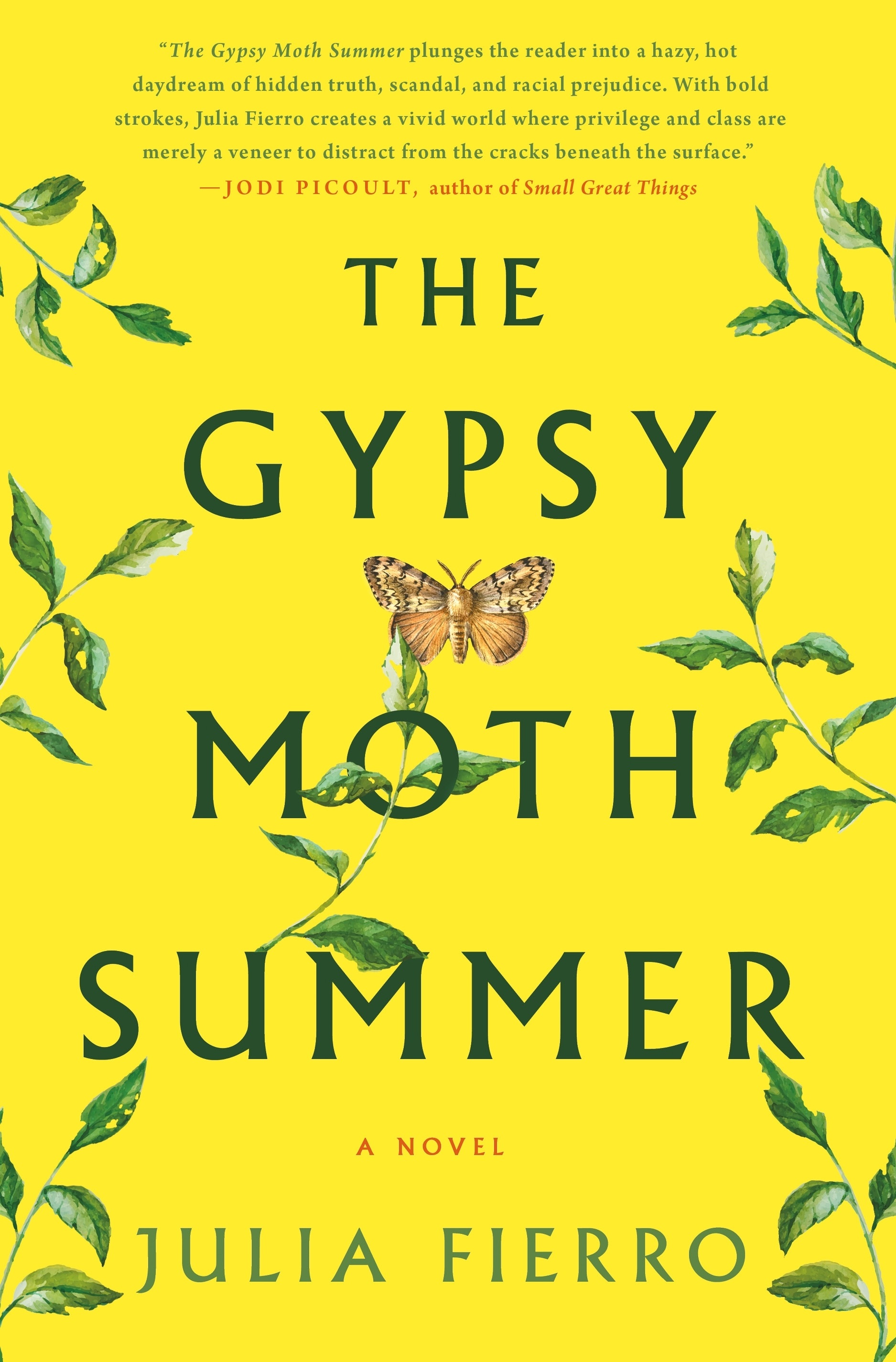
MC: Leslie Day Marshall, the daughter of the most affluent family in Avalon Island, returns to the island with her black husband, Jules, causing divisions and dissent to spread through the community as people take sides over the controversy of interracial marriage. As a white-passing woman, how did you research racial prejudices and oppression for The Gypsy Moth Summer in order to have an authentic voice?
JF: I read memoirs by African American writers, specifically books that focused on the experiences of young Black men, including Jesmyn Ward’s memoir Men We Reaped and the recent essay anthology she edited, The Fire This Time: A New Generation Speaks about Race; Ta-Nehisi Coates’ memoir The Beautiful Struggle; D. Watkins’ The Beast Side: Living and Dying While Black in America; and James McBride’s The Color of Water: A Black Man’s Tribute to His White Mother. One of my favorite autobiographical novels is Mitchell Jackson’s The Residue Years, set in the ‘90s in Portland, Oregon, one of America’s whitest cities, and so I reread that along with novels by Colson Whitehead (Sag Harbor), and Paul Beatty’s recent The Sellout.
I also reread books that had shattered, and then rearranged, my limited and privileged perspective as a young reader (the most important books in a reader’s life), novels like Richard Wright’s Native Son, Ralph Ellison’s Invisible Man, Gloria Naylor’s Mama Day, Toni Morrison’s Tar Baby. I also reread James Baldwin’s nonfiction, especially his book of letters, The Fire Next Time, which is one of the most important books I’ve ever read, and I wish I’d been assigned it in high school, and then again in college, and when I was a professor at predominantly white universities in Iowa and NYC, I assigned the book every semester. The New York Times Book Review said it best, The Fire Next Time is “sermon, ultimatum, confession, deposition, testament, and chronicle…all presented in searing, brilliant prose.”
I listened to many of the above books on audio, which I often do so I can knit and “read” at the same time, and I’ve found that a book performed by a talented audio narrator can capture the emotional intensity as the author intended it to be experienced.
Social media, with its infinite voices, is always informative. Scrolling through Twitter, reading the observations of brilliant writers like Roxane Gay, Kiese Laymon, Victor LaValle, Emily Raboteau, Saeed Jones, and many others, and witnessing their reactions to current political events in real time is an education I’d never imagined I’d have the opportunity to experience.
MC: There has been much discussion about whether or not writers should write from the perspective of another race, particularly a minority character written by a white author. You did a brilliant job representing the voices of Brooks, a bi-racial teenager, and Jules, a black man. How did you tread the line between telling an important story and not exploiting the struggles of another race?
JF: When I first began writing The Gypsy Moth Summer, I thought of it as “historical fiction.” 1992 seemed so distant—the culture, the fads, the uninformed pre-Internet consciousness, the racial prejudice and sexism and homophobia. Perhaps, I wanted to believe these were issues of the past and that I was raising my children in a better and greater America, not a larger version of the novel’s fictional Avalon Island—racist, sexist, greedy.
Then the 2016 election revealed to us the America many people, many white and privileged like myself, did not want to see. Who hears “Make America Great Again” and does not think of the crimes in our recent past committed against African Americans, gays, immigrants, women—crimes that are committed again and again every day? Perhaps, the only good thing about the election result is that we cannot lie to ourselves any longer but must accept that we live in a country that chose hate over inclusion.
The debate concerning cultural appropriation is an important and necessary discussion and writers, like me, writing outside our privileged perspective and experience must be open to criticism. And fully aware of the great responsibility placed on us when we use a minority character’s story—because, as much as a writer can try to convince herself that she is not using her characters to show the world as he or she sees it, or the world she wishes existed, she is. Our characters are the filters through which we make sense of life. I’ve read many insightful essays on the topic of cultural appropriation and writers often preach empathy as the key. Yes, empathy is essential in writing in a perspective that is not your own but is it enough? I don’t know.
To write only from within my narrow experience seems impossible, and somewhat cowardly. I write for the same reason I read, the page is where I practice my humanity, where I shatter my preconceived notions and reassemble them, all in the hope that I’ll learn something, become a better person. Reading and writing is my checks and balances, so to speak, where I go when my limited perspective clouds my vision, my privilege allows me to grow too comfortable, and I lose sight of the infinite multiplicity of experiences that Americans have. We cannot afford to feel comfortable right now but need to remain alert, disturbed, because disturbing things are happening on our streets, in our government, our schools, every day.
Jules is the character I feel the most deeply for. Maybe because he is the dreamer, the believer. Maybe because he loses the most. I will worry about his loss always, and wonder if it was necessary. Because the most important part of your question is the possibility of “exploiting the struggles of another race” and this responsibility was with me every chapter, and I think that is necessary. It was in the Midwest, at the Iowa Writer’s Workshop, that I learned possibly the most important writing lesson (and life lesson). Marilynne Robinson taught us that the highest priority is having compassion for your characters. I think about this nearly every time I sit down to write because bad things do happen to my characters, and I owe it to them to make sure their pain is meaningful.
MC: Maddie Pencott LaRosa understands life on both sides of town and falls madly in love with Leslie’s and Jules’ son, Brooks. How does the romance between Maddie and Brooks parallel and contrast that of Leslie and Jules?
JF: Ah, young love… I can still conjure that feeling from so many years ago, when, for the very first time, I was mad in love. When the person you love pales in comparison to who you imagine your lover is. I think it is a bit unfair to compare Maddie and Brooks to the weathered love of Jules and Leslie because what has ever, in the history of humanity, trumped pure first love?
I wrote an essay for The Millions on the topic of writing about sex in literary fiction, and, specifically, the fear and avoidance I’d witnessed, and experienced myself, in writing about sex and emotion in creative writing workshops at Iowa as a student, and later as a teacher at the Sackett Street Writers’ Workshop, the writing school I founded in 2002 after Iowa. It was the first critical essay I’d published and I was shocked when it was read widely. I began receiving invitations to speak on panels at writers’ conferences on the topic, and I learned so much from my more experienced co-panelists (writers Gina Frangello, Elissa Schappell, Wendy Ortiz, Pamela Erens and more) about the challenges and rewards of writing about sex and love.
I realized there should be an infinite variety of “literary sex” just as there is in real life—passionate, awkward, violent, tender, disappointing, epiphany-inducing and plain mediocre. Before The Gypsy Moth Summer, most of the sex scenes I’d written were negative in that they highlighted a flaw or conflict in the characters’ relationships. I wanted Maddie and Brooks’ sexual relationship to be positive—tender, supportive and free from guilt or shame. The kind of relationship many of us, myself included, wished we’d had as a teenager. Add to that idealization innate to young love—first love—where a young man or woman can look at another and believe he or she embodies all that is good, and Maddie and Brooks are a modern-day Romeo Juliet. They believe their love is the only good on the poisoned island that is their prison.
The writer Elissa Schappell, who was on many of those panels about sex in literary fiction, claims sex, in life and in fiction, is about power, and this dynamic rules Jules’s and Leslie’s relationship. There is a line in one of Jules’s early chapters in The Gypsy Moth Summer where he is thinking about the role sex has always played in his and Leslie’s relationship. “He’d learned this about her when they first met in Cambridge years ago: She was a woman who understood that men needed sex.”
It was one of the first lines I wrote from Jules’s consciousness and I can see now that I knew early on sex would play a significant role in the power balance, or imbalance, in their marriage.
MC: The arrival of caterpillars and the gypsy moth that fly out of their cocoons play a central imagery throughout The Gypsy Moth Summer. What metaphor did you craft between the gypsy moth and the drama unfolding in Avalon Island?
JF: Hmm, metaphors… I have to admit that my intent is purely emotional when I write. I’m focused on creating a certain psychological experience for the reader through the characters, the setting, and through detail (and ravenous caterpillars make quite the atmosphere). The caterpillars and moths create an otherworldly mood that I wanted the reader to feel trapped in, just as the characters are trapped. After many drafts, once I have structure and character and story refined, only then can I see any kind of metaphorical meaning. I do believe that kind of thematic meaning has to reveal itself organically to the author or the reader will feel the “hand of the writer” so to speak, the author manipulating too heavy-handedly.
Frank Conroy was the director of the Iowa Writer’s Workshop during my time there and I studied with him. He had this pyramid he would draw on the blackboard. The base of the pyramid was LANGUAGE and he would scrawl across the base “Meaning, Sense, Clarity” and explained that without clear language no story was going to have a stable foundation. Then came the smaller upper sections of the pyramid—CHARACTER, STORY, and at the very top, SYMBOL. A writer couldn’t start from the top down, he explained, or the pyramid would tumble over.
The metaphorical meaning of the gypsy moths became clearer to me on who-knows-what # revision, when I added a line to one of Veronica’s chapters. The plotting matriarch of Avalon Island is inside her estate, White Eagle, looking out the window and watching the caterpillars crawl across the glass, and she thinks, “Perhaps a plague was just what the island needed.”
This felt like a revelation for me. It is impossible not to see the plague as a sort of punishment for the crimes Avalon Island–and its Grudder Aviation military factory, its bread-and-butter—has committed. This is an island where bombers are made, machines that have killed countless lives from WWII and on. How can that kind of destruction go unpunished?
MC: What’s next for you?
JF: I’m ready to write the BIG book. The one every novelist waits (or should wait) to write when she is more grown up, a bit wiser, and has learned to write a story. This next book is based on the convergence of two very different “American Dream” stories. The first is my father’s childhood during and after WWII in Southern Italy (his entire village hid in a cave for weeks during the Allied liberation bombing), and his immigration to the U.S. in the early ‘70s. The second is based on my maternal first generation Irish-American grandfather’s life–he was the inspiration for the Colonel in The Gypsy Moth Summer, although unlike the fictional colonel, my grandfather was a bona fide colonel and served in the U.S. Army during and after WWII. Although he had no college education, and had grown up working class, the son of a Brooklyn firefighter, he had an uncanny understanding of business and politics and charmed his way into the real estate boom of the ‘60s and early ‘70s. He founded an electrical engineering company, despite his total ignorance of engineering, and the company helped build the Twin Towers, an endless source of pride for my family. Eventually, his mania (the same that was responsible for his charm) caught up with him and the fortune he made lasted only a single generation.
Before I throw myself into this next project—and it is hard not to when inspiration bites and I already have pages of notes—I need to spend some time with my kids. When they heard I was almost ready to start another book, they may have cried a little…. It isn’t easy having a mother who writes books and runs her own business (running Sackett Street Writers is a full-time job plus). I often have to “steal time” from my family to work. The concept of motherhood work-family balance that we hear parroted in mainstream media again and again (and, yes, I am thinking of Ivanka Trump) is a myth, and perpetuating it is a disservice to women.
So I’ll take a few months off from writing to play Legos and read graphic novels with the kids, including many trips to the library (they are both book worms, thank goodness), all the time responding to the many Sackett Street Writers applications we receive daily, and then it is back to writing.
**
Julia Fierro is the author of the novels The Gypsy Moth Summer (out now) and Cutting Teeth (2014). Her work has been published in The New York Times, Poets & Writers, Buzzfeed, and other publications, and she has been profiled in Brooklyn Magazine, the L Magazine, The Observer and The Economist. A graduate of the Iowa Writer’s Workshop, she founded The Sackett Street Writers’ Workshop in 2002, which has grown into a creative home to 4,000 writers in NYC, Los Angeles, and Online. SSWW was named “Best Writing Classes” by The Village Voice, Time Out New York, and “Best MFA-Alternative” by Poets & Writers. Julia lives in Brooklyn and Santa Monica with writer Justin Feinstein and their two children.
June 30th, 2017 |
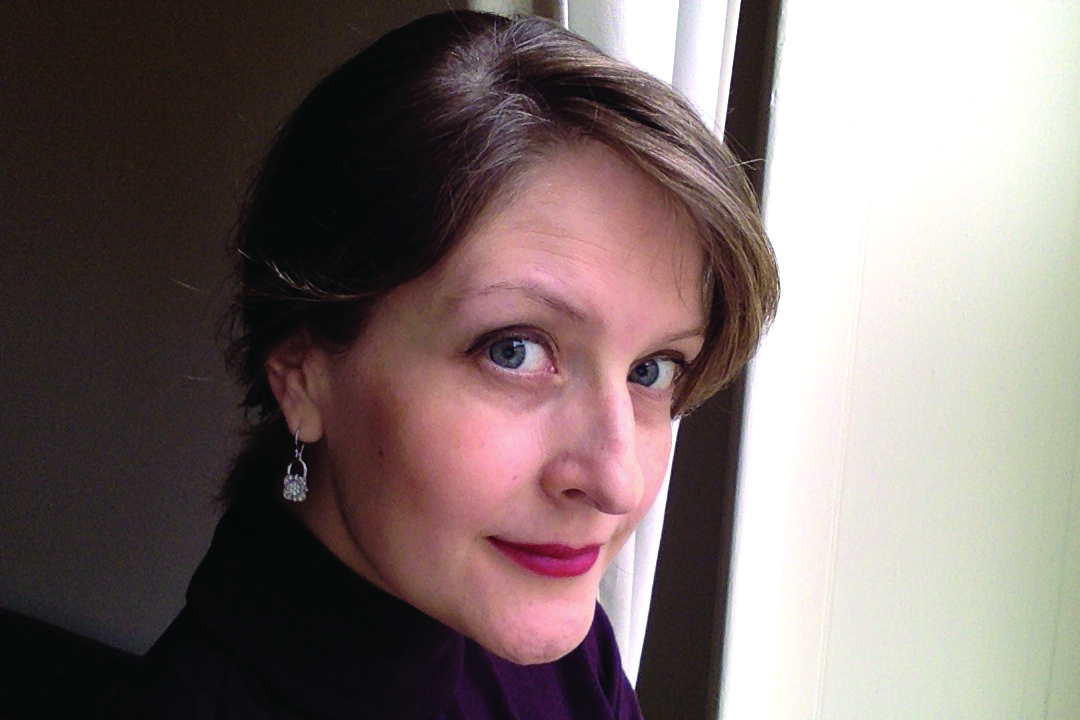 Midwestern Gothic staffer Kathleen Janescheck talked with author Greer Macallister about her novel Girl in Disguise, breaking barriers, the bad-ass women of history, and more.
Midwestern Gothic staffer Kathleen Janescheck talked with author Greer Macallister about her novel Girl in Disguise, breaking barriers, the bad-ass women of history, and more.
**
Kathleen Janescheck: What’s your connection to the Midwest?
Greer Macallister: I was born in Michigan and raised in Iowa from a very young age until I went to college, so I consider myself a Midwesterner who happens to live on the East Coast. Growing up in the Midwest is core to my identity.
KJ: Both of your novels, The Magician’s Lie and Girl in Disguise, have had Midwestern settings-Iowa and Chicago, respectively-so how has the physical landscape of the Midwest shaped your works?
GM: Small-town Iowa was an easy choice for the present action of The Magician’s Lie, because it’s somewhere the protagonist, famous illusionist The Amazing Arden, has no familiarity with. She’s on unknown ground, literally. The policeman who has her under arrest has lived there all his life. I wanted them opposed in as many ways as possible, and geography is part of that. For Girl in Disguise, the Pinkerton Detective Agency was based in Chicago at that time and the real-life Kate Warne really was hired there, so I had no choice! But it was a growing, vibrant city still finding its identity in the 1850s, still somewhere between the staid East Coast and the truly Wild West. So it’s a great setting for the first female detective in the U.S. to make her mark.
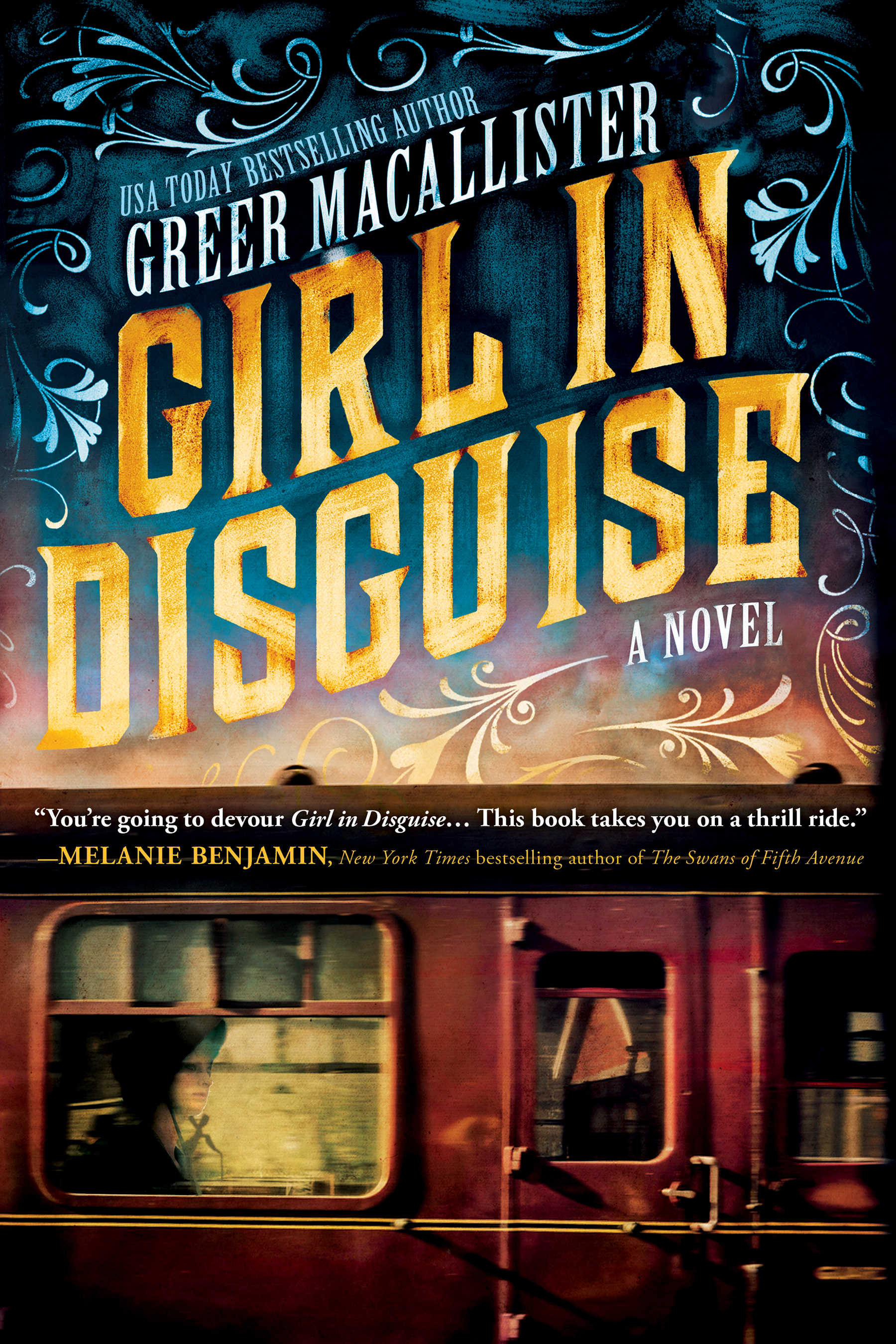
KJ: Do you think the literary world has ignored the Midwest?
GM: I think the myth of “New York City” as the be-all and end-all of the literary world has been a disservice to writers in general. You can be an amazing writer from anywhere. You can bloom anywhere you’re planted. I’ve been a writer in Iowa, I’ve been a writer in Brooklyn, I’ve been a writer in Philadelphia, and so on. New York is just more expensive. Some of the best writers got their education in Iowa City and some didn’t. I just hate the idea that any writer is self-limiting their potential by thinking that a particular geography or program is going to make or break their career. Your opportunities aren’t identical everywhere, of course, but there are still opportunities.
KJ: Girl in Disguise is a work of fiction, but inspired by the true story of Kate Warne, who is considered the first female detective. How do you navigate the line between fact and fiction?
GM: Very happily! For better or worse, the historical record doesn’t give us a lot to work with as far as Kate is concerned. So I’m writing historical fiction that’s a little history and a lot of fiction. If you have letters, diaries, extensive records, you have a different challenge – you have to pare it down. I was building up. I gave Kate the personality I think she would have to have had to do the things she did. She walked into Allan Pinkerton’s office in 1856 and told him a woman could do things men couldn’t do. Obviously she was bold. Everything started there.
KJ: What drew you to write about Kate Warne in the first place?
GM: The fact that I made it to my late 30s without ever having heard her name told me that someone absolutely needed to tell her story. I decided it should be me, and my agent and editor quickly agreed. All I had to say was “first female Pinkerton detective” and they said “Oooh!” As a writer, you want that “oooh.” Especially from the reader. You want to pique their curiosity right off the bat.
KJ: How do you think writing about women of the past can affect the present?
GM: There are two reasons I do it, and they’re kind of opposites. One is to inspire and inform – look at these things women have been doing all along that they didn’t get credit for! If they could break those barriers, what amazing things can we do today? The other is to draw a direct, possibly unflattering parallel to the present – are things really so different, have we come as far as we’d like to think? The audience members of Arden’s time, the 1900s, are made very uncomfortable by an illusion in which a woman cuts a man in half – are there parts of our country where that would still be true today? I bet there are. And those same people would say, “Oh, sure, a male magician cuts his pretty assistant in half, that’s just how it is, you can’t read anything into that.” But you flip it, and they freak out. Showing a woman in a position of power over a man is still challenging to some people’s worldview. It shouldn’t be, but here we are.
KJ: Your work has been praised for its vivid and immersive depictions of the past-how do you construct an atmosphere in your works?
GM: The careful selection of detail, which I think is one of the hardest writing skills to develop and one of the most important. I was reading a historical novel the other day that referred to someone “singing a popular tune.” If I’m writing that book, I’m probably going to tell you he was “laboring through a halting version of ‘Sweet Rosie O’Grady’ that would have put Gaskin in his grave.” The name of the song might not mean anything to you, but it’ll pull you a little bit more into that world. Similarly, I don’t want to bring an action scene to a halt to give you a dissertation on the history of corsetry, but if a character can’t catch her breath because her corset is too tight and the whalebone’s digging into her skin, that helps put you in the scene.
KJ: You’ve written a bit of everything-poetry, fiction, plays-what has each genre taught you about writing?
GM: I feel very lucky to have studied and written widely across genres. Poetry helps you perfect the art of word choice – it gives you the luxury of playing around with particular words and hearing how they sound next to each other, the patterns, the rhythms. Plays are great for improving your dialogue. But fiction is where I feel most at home, and I think it benefits from the skills I developed elsewhere. All writing is related. Practice one and you get better at the others, even as you have to make sure you’re also working on what your particular genre requires. For novels that’s character development within a coherent and compelling plot.
KJ: What women writers have most inspired you and influenced your work?
GM: Margaret Atwood, first and foremost. Talk about someone who works across genres, my goodness. Madeleine L’Engle from the time I was very young. Barbara Kingsolver. I’m also challenged and inspired by my fellow historical fiction writers who are always producing amazing new work. Readers today have so much to choose from, which can be daunting as a writer, but it’s really exciting as a reader, too.
KJ: What’s next for you?
GM: I’m working hard on promoting Girl In Disguise now that it’s out in the world, and also working on my next novel in the meantime. That’s a hard balance, so Girl In Disguise is taking precedence for the next couple of months. (Readers can find my tour schedule on greermacallister.com/events.) I’ve been saying my work in progress is more work than progress lately. But my third novel is another story partially inspired by history, featuring a strong female protagonist. That’s my sweet spot right now: the bad-ass women of history.
**
Raised in the Midwest, Greer Macallister is a poet, short story writer, playwright and novelist whose work has appeared in publications such as The North American Review, The Missouri Review, and The Messenger. Her plays have been performed at American University, where she earned her MFA in Creative Writing. She lives with her family on the East Coast. Her debut novel The Magician’s Lie was a weekly or monthly pick by Indie Next, LibraryReads, People Magazine, SheReads, PopSugar, Publishers Weekly, The Boston Globe, and Audible.com.
June 29th, 2017 |
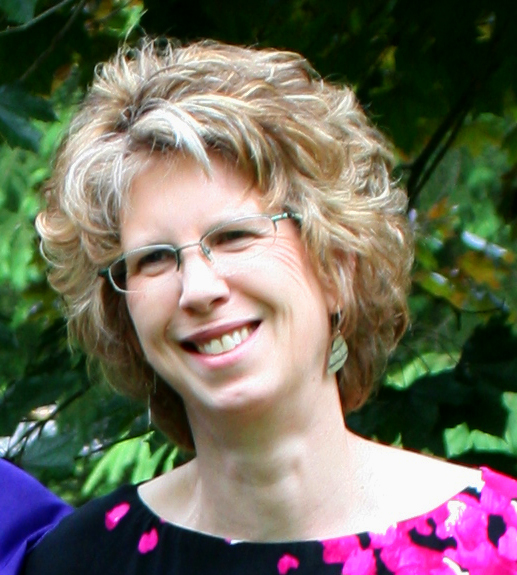 Midwestern Gothic staffer Allison Reck talked with author Laura Hulthen Thomas about her collection States of Motion, the danger in fearing to write what you don’t know, the shortcut to writing success, and more.
Midwestern Gothic staffer Allison Reck talked with author Laura Hulthen Thomas about her collection States of Motion, the danger in fearing to write what you don’t know, the shortcut to writing success, and more.
**
Allison Reck: What is your connection to the Midwest?
Laura Hulthen Thomas: I’m a Midwestern almost-lifer. When I was very young, my parents moved from New Hampshire to Southeast Michigan to work in the auto industry. We spent a couple of years in a Wisconsin paper mill town, too, before becoming permanent Michiganders. Midwestern living hasn’t taken the Yank out of my family, or me, although I like to think my rougher Eastern edges—quick, white-hot opinions, no space for gray areas (Live Free or Die! is my birth state’s motto)—have been sanded down by the Midwest’s pace, and patience.
AR: In your recently published collection, States of Motion, the stories are set in Michigan – a place you are very familiar with as a professor at the University of Michigan’s Residential College. Do you believe that authors should only “write what they know” or is it important to explore the unfamiliar?
LHT: I encourage my writing students to seek out the unfamiliar as much as possible! Maybe this is because, as a transplant from the East, Michigan has never felt all that familiar to me. Moving while very young means having to navigate new, strange situations and friendships before your first, original home ever had a chance to claim your heart. I don’t think I had learned the ropes of what a hometown is, or what friends mean, before having to start all over a couple of times in a few short years. I’m also lucky to live in the very diverse Southeast Michigan region. Just when you think you have this place all figured out, well, guess what. I played with assumptions about place when writing the stories that became States of Motion. Hippy-dippy stronghold Ann Arbor isn’t the whole story of that town, and our rural places aren’t just farmer-in-the-dell burgs. This region brings town and gown, rural and urban, absolutely cheek to jowl with one another, but the various economic classes and identity groups can form their bubbles if they choose. You can isolate, congregate, avoid or mix-and-mingle with ease. It’s a weird place, which is the best place to be.
The trick to writing fiction is to make the unfamiliar natural, and to make the familiar odd, strange, worth a deeper look. This leads to wonderfully compelling stories. It can be really tough to find the unknown about home, but if the writer can de-familiarize what she knows so well, she can make the landscape part of the trouble, and then maybe, part of the epiphany.
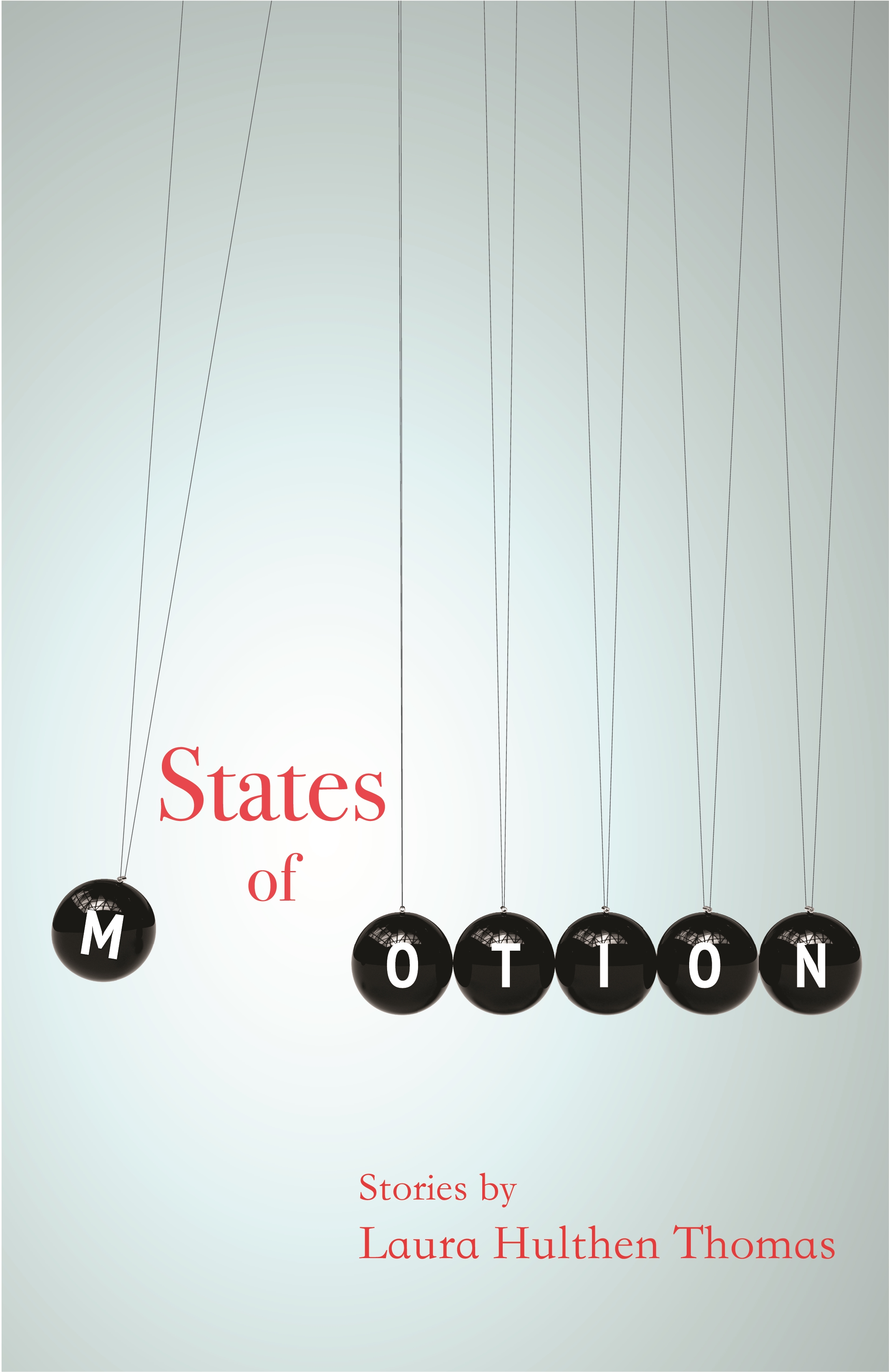
AR: Drawing on the previous question, do you think that this could be dangerous for a writer, to write about something they haven’t personally experienced or known?
LHT: I find my imagination is set in motion most passionately when wondering how someone different from me experiences the world. A great example is Emily, the scientist turned lab manager in “Lab Will Care”. Science was my absolute worst subject in school, especially chemistry and biology. I never even took physics, having by that point given up all hope of understanding any scientific subject matter. Even now, I’m not at all a logical thinker! It’s really embarrassing how befuddled I am by equations, beakers, and data points. But Emily is built for the lab; that’s where the world makes sense, where she feels useful. She can systematize. She can work for something greater than herself, save people, change the course of human knowledge. She can also nurture, in ways she can’t in her family life. I have never experienced anything remotely like Emily’s daily doings, but it’s her life, not mine. I have to go where she lives and learn what I can about what she experiences and knows.
I think it’s dangerous for any writer to be afraid to write about something they haven’t personally experienced or known. We wouldn’t have fiction, journalism, poetry, or nonfiction without writers figuring stuff out, inhabiting other perspectives, in their mission to bring full stories to the page. Sometimes writers get the facts wrong, or don’t capture an experience authentically; sometimes tone undermines integrity, and intent. That’s the breaks—writers make mistakes, and some published writing is in poor taste, whether intentionally or not. I understand the purpose of this question is to comment on the current conversations around the appropriation of identity and experience. More than ever, writers and readers are questioning authenticity and a story’s true owner. These are marvelous and important conversations to have, and I have them with my own students. We watch Chimamanda Ngozi Adichie’s TED Talk, “The Danger of a Single Story.” Then we read Adichie’s Half of a Yellow Sun, in which the character of Richard, a white Briton, leaps off the page with the same intensity as Nigerians Olanna, and Kainene, and Odenigbo. Adichie’s novel can only tell the whole sweeping story of Biafra’s short-lived independence by inhabiting the perspectives of women and men of all races. I’m glad she didn’t think this work dangerous, but necessary.
AR: Explain the inspiration behind this collection’s theme. Why did you decide to highlight Newton’s Laws of Motion (inertia is referenced in the epigraph and the Third Law of Motion is represented in the cover art) and how are they relevant to the stories?
LHT: Yes, Wayne State Press designer Rachel Ross’s wonderful cover features a Newton’s Cradle, those cool swinging balls that demonstrate the law of energy conservation; that energy can’t be created or destroyed, but can only change form. In this case, the balls change from potential to kinetic energy. While writing these stories, I saw how my characters so often made choices and chased desires to spark reactions from their families or their communities. I think the stories question whether laws of the heart are as inevitable as physical laws. Many of the characters come to learn that love, or hate, are neither created nor destroyed, but only change form once they are set in motion.
I’m married to an architect, and one of the ways Ron and I are most different is how we relate to inertia. In my view, if that ugly wall is chopping up the floor plan, hang a pretty picture, arrange a couple of comfy chairs around an end table, create a conversation nook. You make the best of what’s already there. In my husband’s view, if that wall isn’t load bearing, out it goes. Open up that plan, let the light in. Don’t accept what’s ugly unless ripping it out will bring the house down. Both views make sense of the environment and the world, but the stakes and outcomes are different.
My daughter and two sons turned out to be scientific types, mechanically skilled, brilliant logical thinkers. The Bionicles they built!! The Lego cities and outposts they created!! All I could ever do at those tender ages was read an effing book! I was fascinated by this construction crew I was living with, and through them drawn to spend time with characters who take on inertia directly, and then hope for an equal and opposite reaction. But, do passion and love create kinetic energy, or are they just different forms of inertia, as Moor wonders in the title story? In States of Motion, the characters are either awaiting an unbalanced force to set them in motion, or they are that unbalanced force!
AR: States of Motion features eight stories that have vastly different subjects. How do you think they are all connected – is there one common theme, or a general feeling or idea that you are trying to convey throughout the stories?
LHT: At my book launch, someone pointed out that animals play a role in nearly every story, and they don’t usually meet happy ends. I had to admit to the questioner that I hadn’t caught this connection! She asked if I was trying to say anything about the fate of animals at human hands. I didn’t realize how many of these stories mirror morality through pets, or suburban wildlife, or lab subjects. How lucky, that readers are so much smarter than writers and can pick out themes the writer only subconsciously intends.
As far as the glue I consciously intended to connect these stories, the variety you point out in subject matter, characters, and place is most definitely a driving force. I also wanted variety in story length, and I am super grateful to my editor Annie Martin and Wayne State University Press for including the long stories alongside the more standard length stories in this collection. Southeast Michigan is a connector. The great recession and its aftermath is a recurring character. And, as we’ve talked about above, physical laws were an early inspiration, too.
AR: In the initial pages of the book, you include two very different epigraphs – one is Newton’s Law of Inertia and the other is from a Shakespeare play. Traditionally, science and literature are considered opposites, yet you connect them here and in one of the stories, “Lab Will Care,” – why?
LHT: One could say science and literature are not opposites, since they both share the mission of serious inquiry. The scientific method seeks to answer a question through systematic observation and experimentation. Literature also poses questions, and then presents the investigation. I believe where the disciplines differ is that science is out to explain a discovery and supply solutions, while I think the best writing complicates, asks more questions than it answers. Even this is not always true, as some scientific inquiry reveals complexity, or only intends to bring us one step closer to a resolution. Another difference between the two disciplines is that literature is out to entertain us, while science, not so much; but then, the Newton’s Cradle is crazy fun to play with, so there you go.
The Shakespeare quote, from The Merry Wives of Windsor, reads: “O powerful love! that, in some / respects, makes a beast a man, in some other, a man / a beast”. It’s really just another way to state the law of energy conservation – the different forms a man will take when love sets him in motion.
AR: If your students leave your class having learned just one lesson from you, what do you hope that important lesson was?
LHT: Eat your chocolate, and don’t let the poets have all the fun. Just kidding, plus that’s two lessons. I think my students would say I teach them how important it is to come back to the work, find the gaps and mysteries to explore. As a very young writer, I thought revision meant failure; shouldn’t a story just flow the first time out? Looking back, I realize I just didn’t understand how to find what comes next for each story. It took me so long to figure out how to revise on my own, I want to spare every writer I can that grueling waste of time. I want my students to feel more excited writing the third draft, or the fifth, than writing the first. Inspired, disciplined revision is the ultimate short cut to writing success.
AR: Describe your writing process. How do you approach crafting a story?
LHT: Every story has its own unique ratio of winging it, whining, avoiding, and just doing it already, so I can’t claim a consistent craft approach. I try to write in the mornings when I’m fresh, but because of juggling a full-time job and kids for so many years, I have had to learn to be more flexible about the conditions for inspiration. I also have learned to be ok with really crappy writing, or a terrible writing session. A paragraph that seems like a bad idea at the time can turn out to have a sentence or two that takes a story in a new direction. To the extent I have a process, I usually have already fallen for a character I’ve carried around for a bit, and then I think of, or hear about, a situation that might drive that character crazy, or maybe drive them to do something they would never have done before, or couldn’t imagine ever doing; and then I can begin a new story. I like to read scene-driven stories, so I keep things moving along for my characters rather than trap them in chunks of narrative.
AR: What’s next for you?
LHT: I’m writing a novel about a rural Southeast Michigan cop whose unraveling marriage distracts him from the search for a missing Detroit teen. Love, that most wonderful, and terrible, diversion!
**
Laura Hulthen Thomas is the author of the short fiction collection, States of Motion, published by Wayne State University Press. Her short fiction and essays have appeared in a number of journals and anthologies, including The Cimarron Review, Nimrod International Journal, Epiphany and Witness. She received her MFA in fiction writing from Warren Wilson College. She currently heads the undergraduate creative writing program at the University of Michigan’s Residential College, where she teaches fiction and creative nonfiction.
Be sure to check out the follow events for Laura’s book:
Reading with Kelly Fordon on July 26th in Cleveland at the Cleveland Inkubator LitFest.
Reading with Kelly and Lolita Hernandez at Kazoo Books on Saturday, Aug 5th at noon.
June 23rd, 2017 |
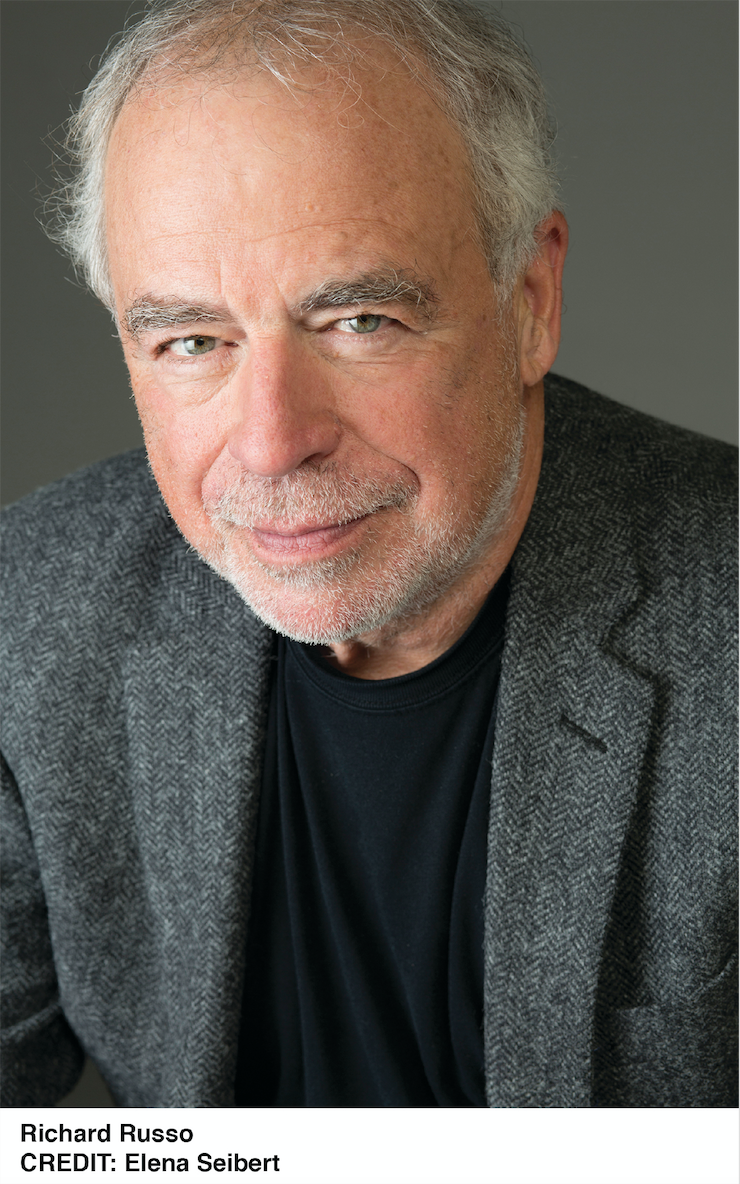 Midwestern Gothic staffer Meghan Chou talked with author Richard Russo about Everybody’s Fool, remembering people through characters, broken ankles, and more.
Midwestern Gothic staffer Meghan Chou talked with author Richard Russo about Everybody’s Fool, remembering people through characters, broken ankles, and more.
**
Meghan Chou: What’s your connection to the Midwest?
Richard Russo: I should probably confess that with the exception of three years when I lived in southern Illinois—which many people seemed to think was the deep South—I don’t have much connection to the Midwest beyond literature (Sherwood Anderson, F. Scott Fitzgerald, or rather his narrator in Gatsby). People sometimes ask if I feel about the Midwest the way the way Jack Griffin’s snobbish parents do in That Old Cape Magic (“the mid-fucking-west,” they call it). No, of course not, but I’m more of a tourist there than an expert
MC: Nobody’s Fool, a now classic text published in 1993, has been adapted into a feature film and received great critical acclaim. Why did you decide, now, to write a sequel?
RR: The main character of Nobody’s Fool, Donald Sullivan, was based on my own father. Because my parents separated when I was young, I didn’t see much of him as a boy. I really got to know him only as an adult. Because he became ill and died relatively young, I never really got my fill of the man. Writing Nobody’s Fool brought him back to life, allowed the two us to continue our father/son conversation. Twenty-three years later, I think I must’ve been lonesome for him, or Everybody’s Fool wouldn’t have been written. I was also lonesome for Paul Newman, who brought Sully so vividly to life in the movie and who had died in between the two books.
MC: In what ways did Nobody’s Fool confine or give you freedom when writing Everybody’s Fool?
RR: I never felt confined in writing the sequel, though I had to reread the book and re-familiarize myself with its details. Obviously you want to preserve the continuity of the two stories as much as possible. What gave me the freedom I needed was shifting the emphasis from Sully to Chief Raymer, who was a bit player in the first novel. Many of the other characters—Ruth, Roy Purdy—had depths I never suspected when I wrote the first novel.
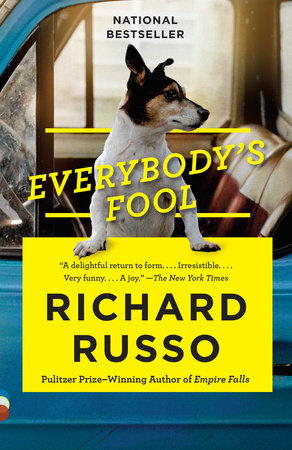
MC: How does the new protagonist, Raymer, compare and contrast to the protagonist in Nobody’s Fool, Sully, and what do these differences and similarities in character reveal about Sully?
RR: In most respects Sully and Raymer are polar opposites. Though he’s made his share of mistakes, Sully made a pact with himself long ago not to indulge in regret. By contrast, Raymer regrets just about everything he’s ever said and done. He is, in that sense, the fool of the title. But Sully’s refusal to regret, to just keep moving, is dangerous too. I suspect most people try to find a middle ground between admitting regret and not being overwhelmed by past mistakes.
MC: Reviewers note that Everybody’s Fool differs most from its predecessor through the way it acknowledges evil, especially through the villainous Roy Purdy. Roy Purdy, connected to Sully through complicated family ties, is released from prison. He was indicted, in Nobody’s Fool, for physically abusing his ex-wife, Janey, and for pursuing her with a gun, which he used to shoot up a house. How did you establish a villain as something more than just a caricature?
RR: Good villains must be understood. The why of their behavior is always important, often more important than the what. Roy beats on women because it satisfies some deep urge. As appalled as we are by his behavior, we don’t really understand it until near the end of the book when he remembers his father taking him to that diner. It’s there that Roy, just a kid, learns that woman—in the form of the waitress who takes his side—is the source of all evil and humiliation for males. He learns his lesson well.
MC: The dynamic between Sully and Rub, his sidekick, provides a great source of humor in the story to combat the hardships the characters face. What power and purpose did you envision humor to play in setting the tone of Everybody’s Fool and in developing relationships between characters?
RR: I grew up among people who used humor combat the realities of hard lives. Air, water, laughter—these things were free and necessary. Power? As Twain put it in “The Mysterious Stranger,” “Against the assault of laughter, nothing can stand.” We laugh about the things that worry us most—sex, death, our own foolishness in the matter of living.
MC: What’s the most important advice you gave your students while you taught at Southern Illinois University Carbondale?
RR: Many of my students at Carbondale were a lot like me—first generation college students from working class backgrounds and off the beaten track home towns. Which means they had stories to tell but were probably reluctant to tell them. Coaxing those stories out, convincing such students that their stories were as valid as stories about New York or Chicago or L.A. was Job One.
MC: How do you overcome rejections or failures during the writing process?
RR: I’m not sure you ever really do overcome rejection or failure. Sometimes it’s possible to accept them and learn from them. Mostly they’re beside the point. You failed? So what? It happens. In fact, it’s supposed to happen. They didn’t like your story? Okay, write another. Maybe they’ll like that one. You internalize what you know to be true across the entire spectrum of the arts; the more you practice, the better you get. (“I can’t go on; I’ll go on.”)
MC: What’s next for you?
RR: What’s next? Well a couple months ago I managed to break my ankle. At the time I’d been reluctant to begin a new novel because I had a lot of travel coming up that would interrupt it. But then there I was, sitting in front of my computer, trapped in my office, my foot in a cast. Why not write the first chapter? By the time the cast came off two months later, I had 150 pages, a very good beginning. I’m thinking about breaking the other ankle.
**
In addition to The Whore’s Child, Richard Russo is the author of nine novels, most recently the best-selling Everybody’s Fool and That Old Cape Magic, and the memoir Elsewhere. In 2002 he received the Pulitzer Prize for Empire Falls. He lives in Portland, Maine.
June 22nd, 2017 |
 Midwestern Gothic staffer Kathleen Janeschek talked with author Samrat Upadhyay about his collection Mad Country, intersections of Nepal and America, current event writing, and more.
Midwestern Gothic staffer Kathleen Janeschek talked with author Samrat Upadhyay about his collection Mad Country, intersections of Nepal and America, current event writing, and more.
 Midwestern Gothic staffer Meghan Chou talked with author Ian Bassingthwaighte about his book Live From Cairo, perspectives on the refugee crisis, the psychological toll of his work, and more.
Midwestern Gothic staffer Meghan Chou talked with author Ian Bassingthwaighte about his book Live From Cairo, perspectives on the refugee crisis, the psychological toll of his work, and more.
 Midwestern Gothic staffer Audrey Meyers talked with author Lance Olsen about his book Dreamlives of Debris, the Minotaur myth, how to navigate a narrative, and more.
Midwestern Gothic staffer Audrey Meyers talked with author Lance Olsen about his book Dreamlives of Debris, the Minotaur myth, how to navigate a narrative, and more.
 Midwestern Gothic staffer Audrey Meyers talked with author Amanda Kabak about her novel The Mathematics of Change, the complications of transitions, not being able to connect, and more.
Midwestern Gothic staffer Audrey Meyers talked with author Amanda Kabak about her novel The Mathematics of Change, the complications of transitions, not being able to connect, and more.
 Midwestern Gothic staffer Audrey Meyers talked with poet Jim Daniels about his book Rowing Inland, being a poet of place, learning about oneself through writing, and more.
Midwestern Gothic staffer Audrey Meyers talked with poet Jim Daniels about his book Rowing Inland, being a poet of place, learning about oneself through writing, and more.
 Midwestern Gothic staffer Kathleen Janescheck talked with author Gabe Habash about his novel Stephen Florida, “nowhere space,” being unsettled, and more.
Midwestern Gothic staffer Kathleen Janescheck talked with author Gabe Habash about his novel Stephen Florida, “nowhere space,” being unsettled, and more.
 Midwestern Gothic staffer Meghan Chou talked with author Julia Fierro about her new book The Gypsy Moth Summer, cultural appropriation in writing, having empathy for characters, and more.
Midwestern Gothic staffer Meghan Chou talked with author Julia Fierro about her new book The Gypsy Moth Summer, cultural appropriation in writing, having empathy for characters, and more.
 Midwestern Gothic staffer Kathleen Janescheck talked with author Greer Macallister about her novel Girl in Disguise, breaking barriers, the bad-ass women of history, and more.
Midwestern Gothic staffer Kathleen Janescheck talked with author Greer Macallister about her novel Girl in Disguise, breaking barriers, the bad-ass women of history, and more.
 Midwestern Gothic staffer Allison Reck talked with author Laura Hulthen Thomas about her collection States of Motion, the danger in fearing to write what you don’t know, the shortcut to writing success, and more.
Midwestern Gothic staffer Allison Reck talked with author Laura Hulthen Thomas about her collection States of Motion, the danger in fearing to write what you don’t know, the shortcut to writing success, and more.
 Midwestern Gothic staffer Meghan Chou talked with author Richard Russo about Everybody’s Fool, remembering people through characters, broken ankles, and more.
Midwestern Gothic staffer Meghan Chou talked with author Richard Russo about Everybody’s Fool, remembering people through characters, broken ankles, and more.




